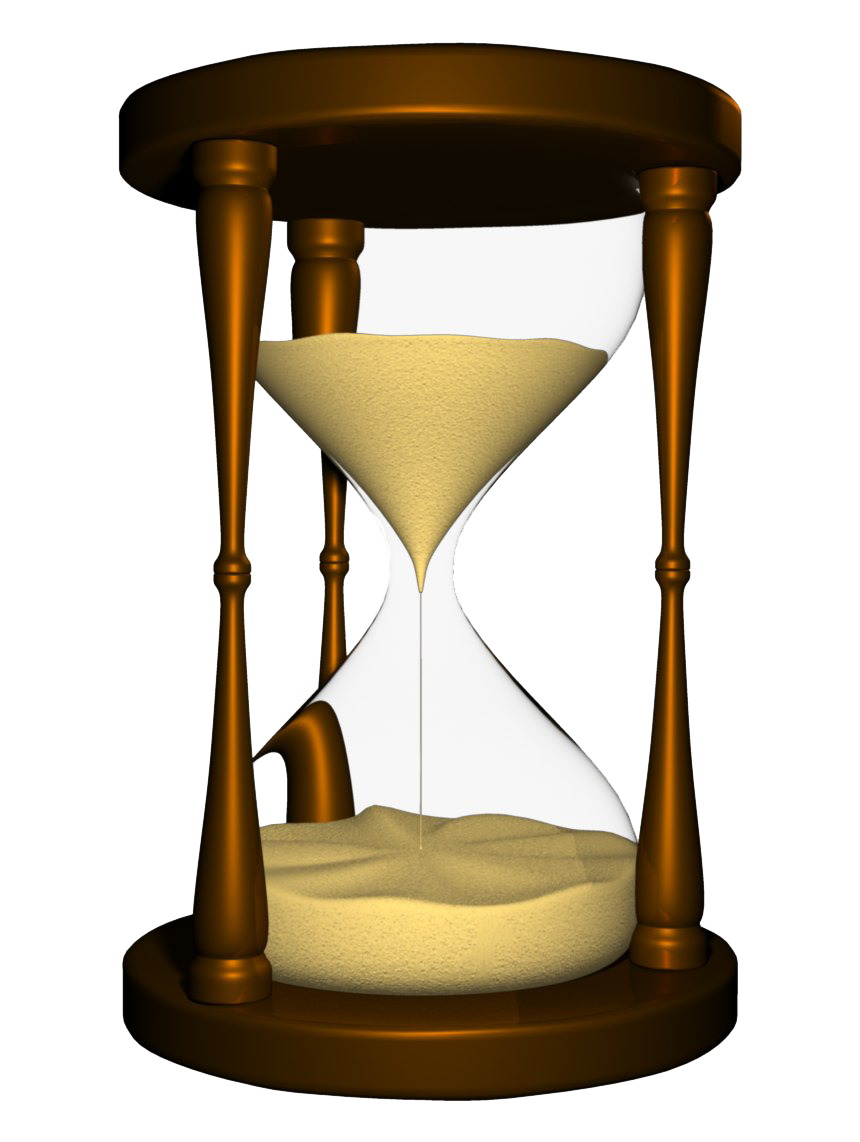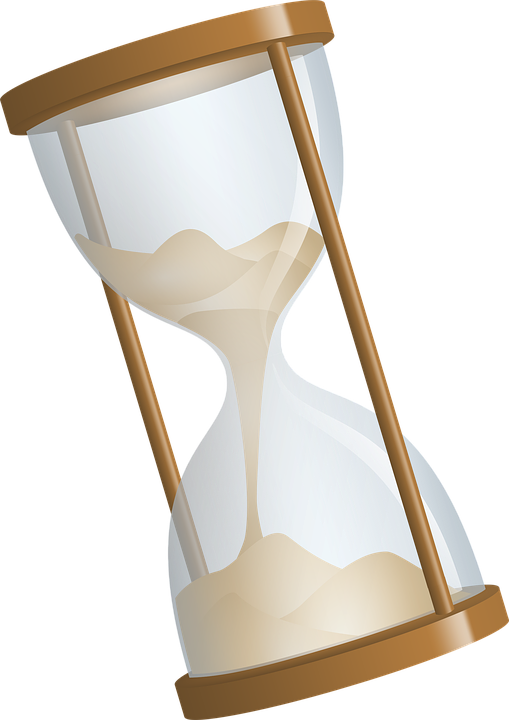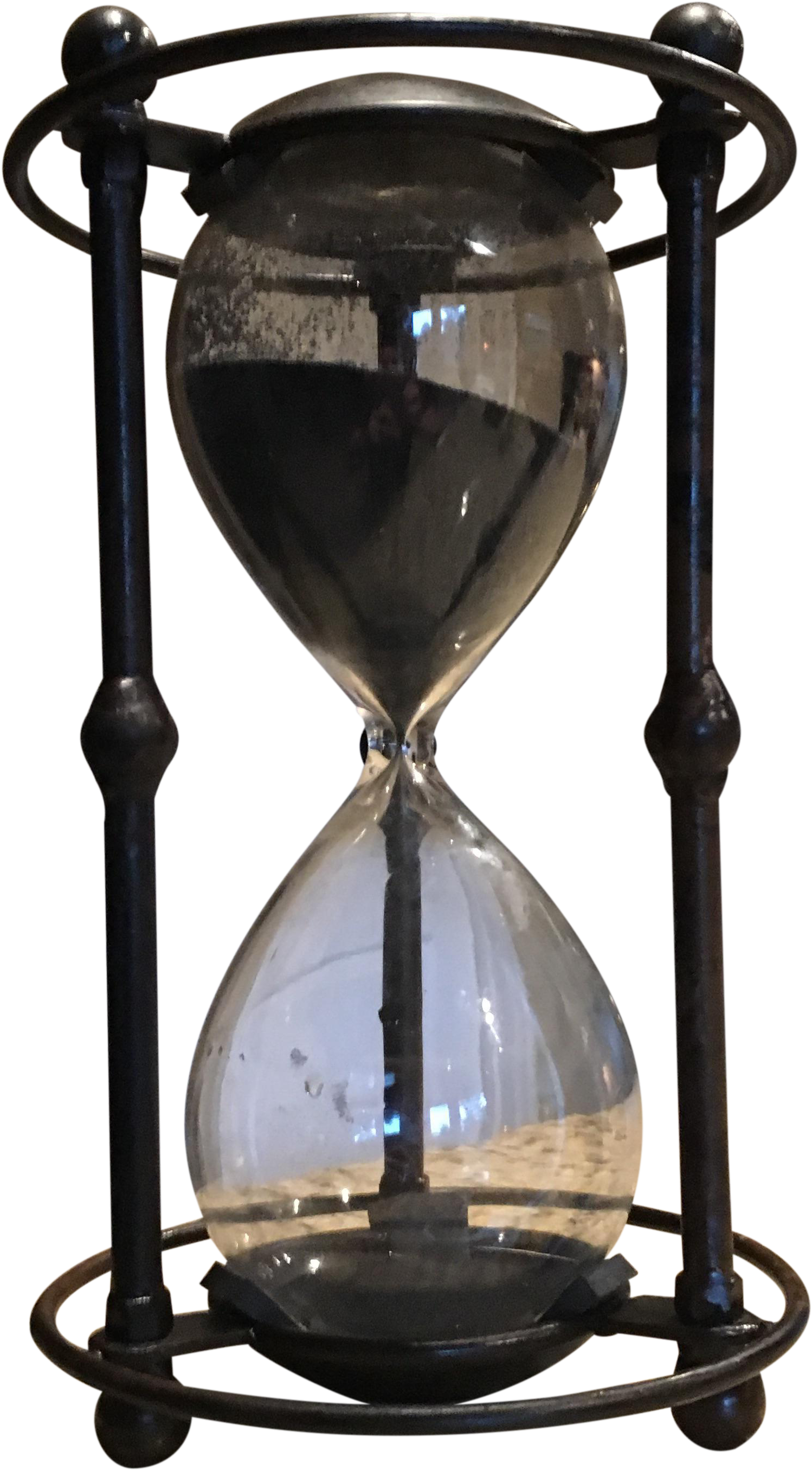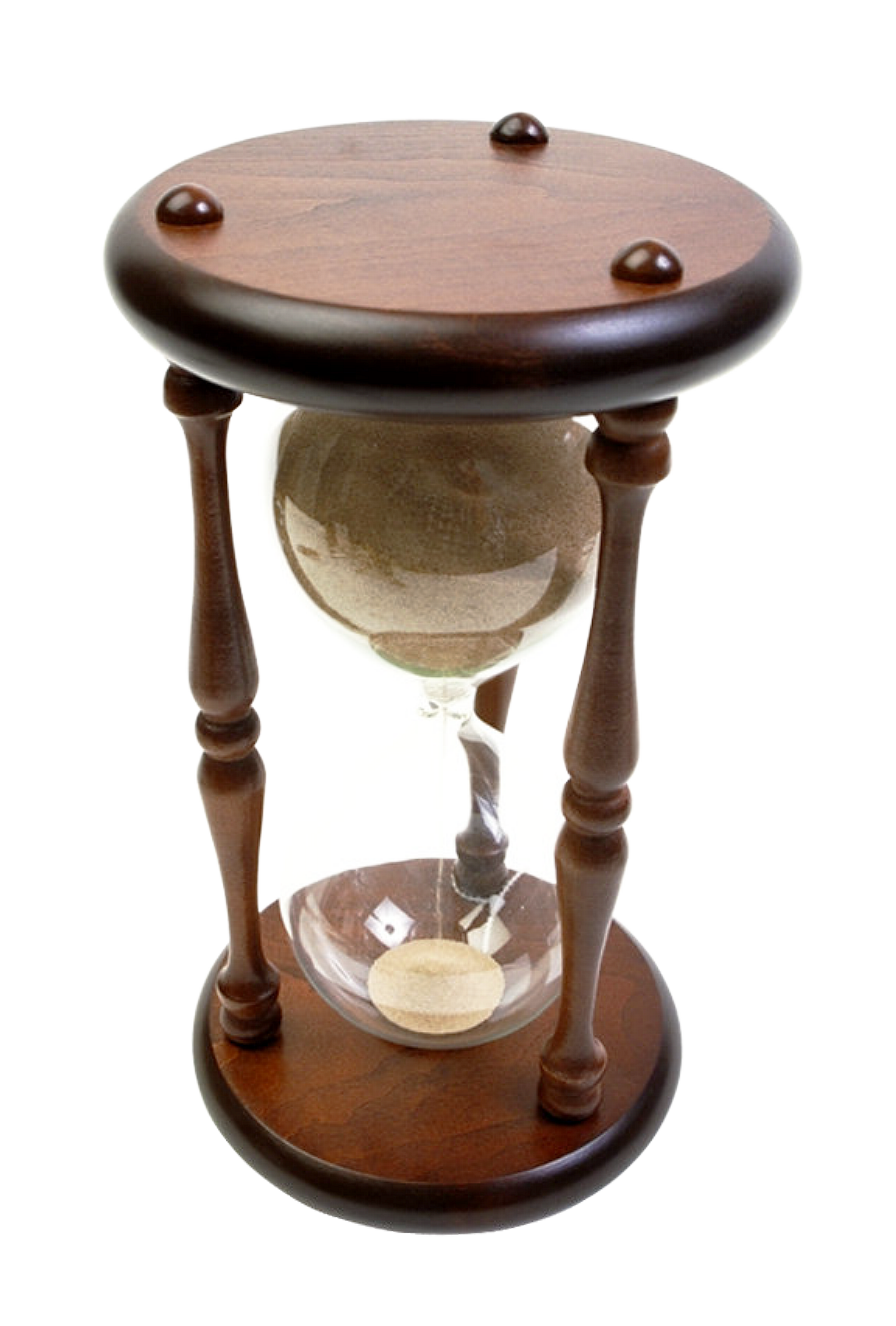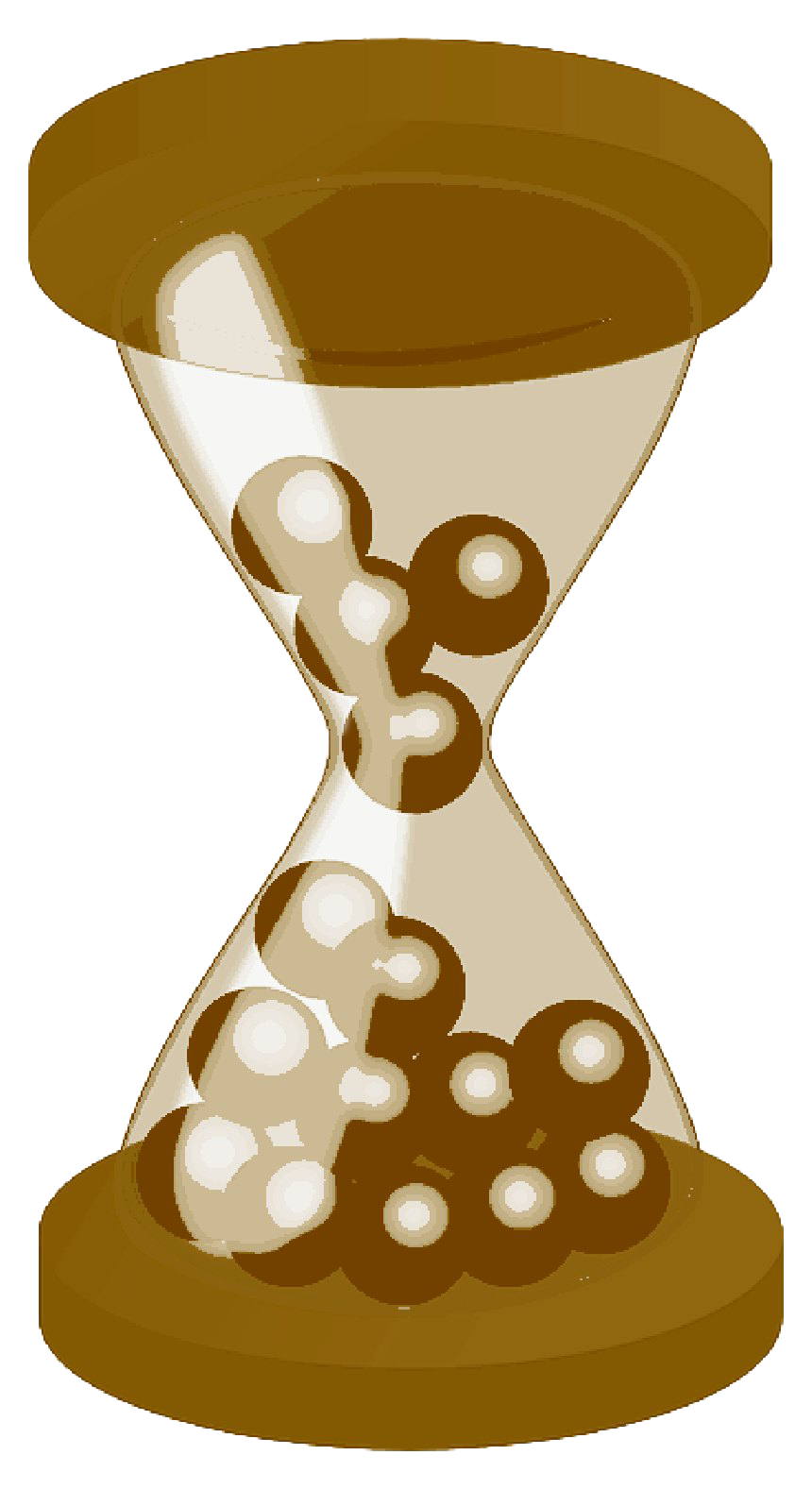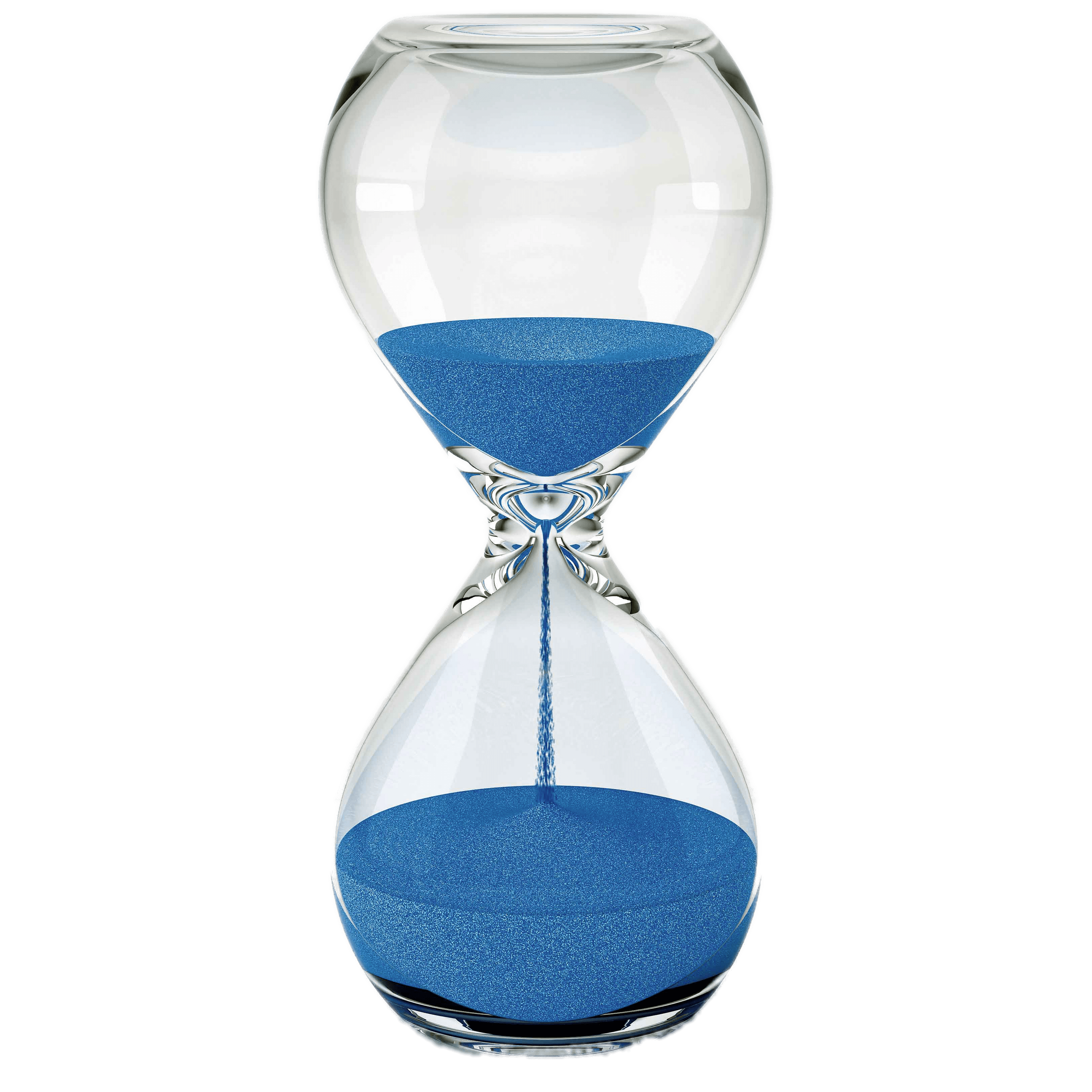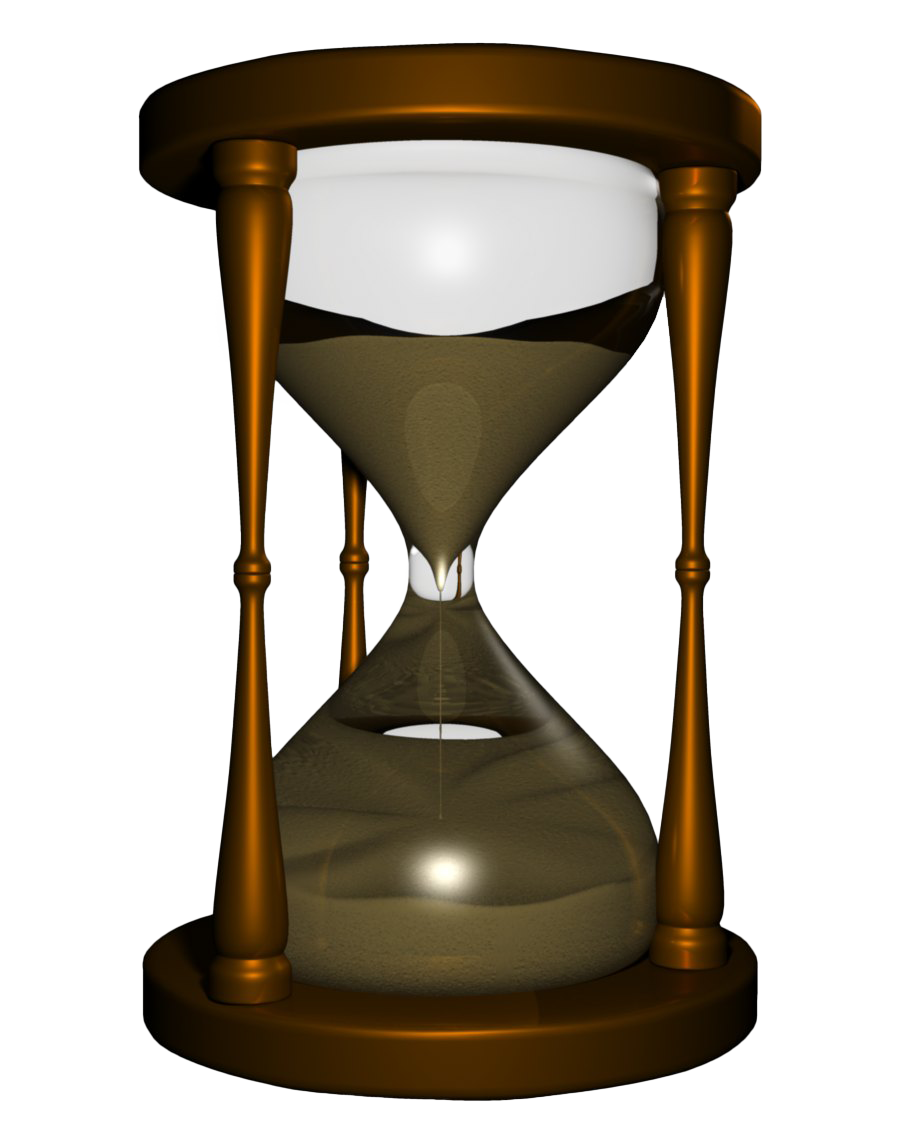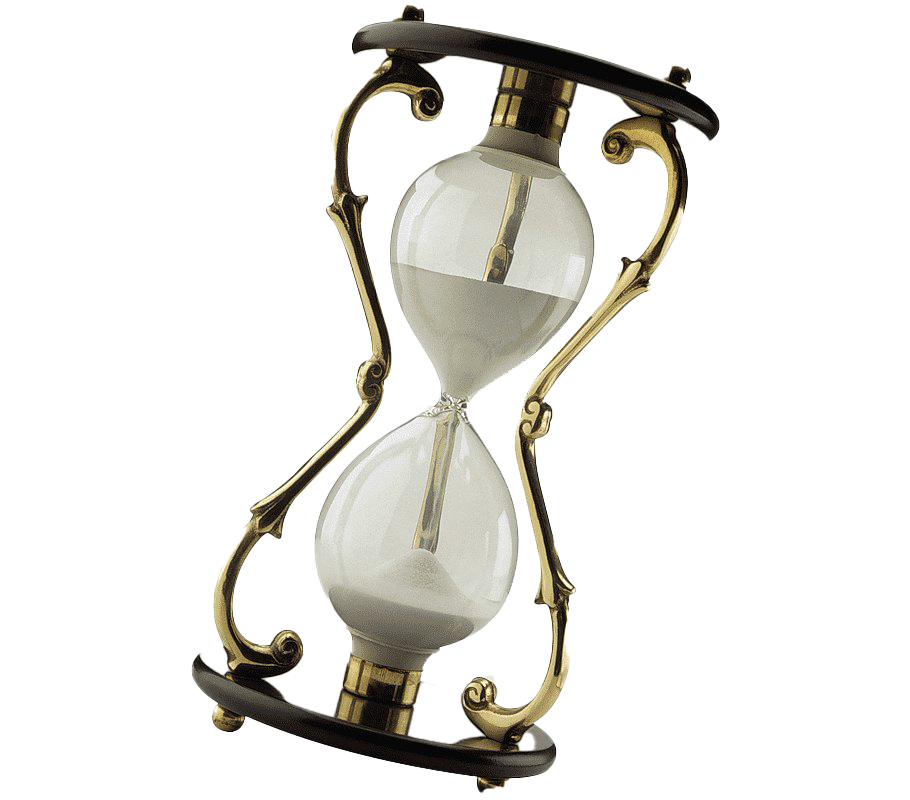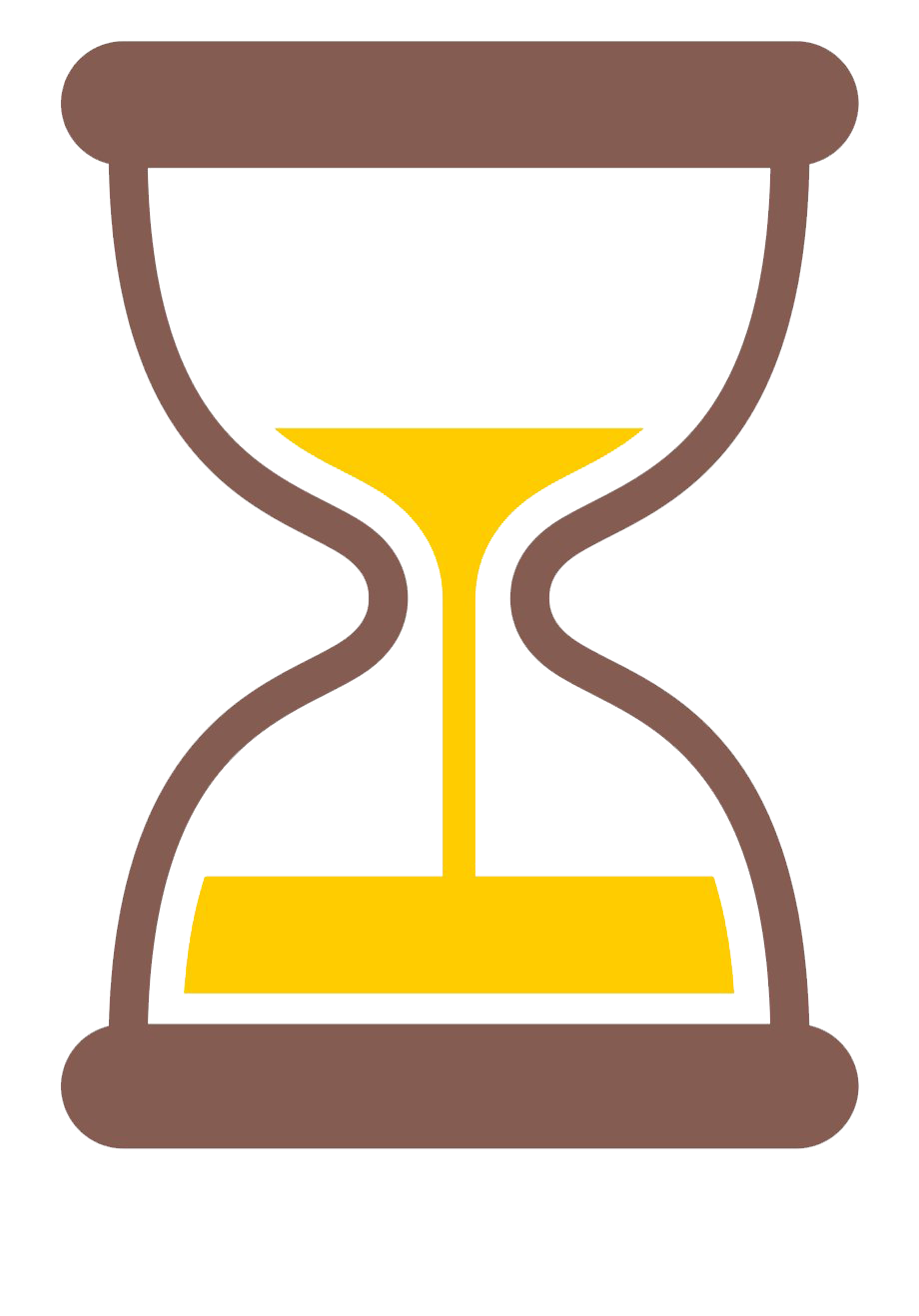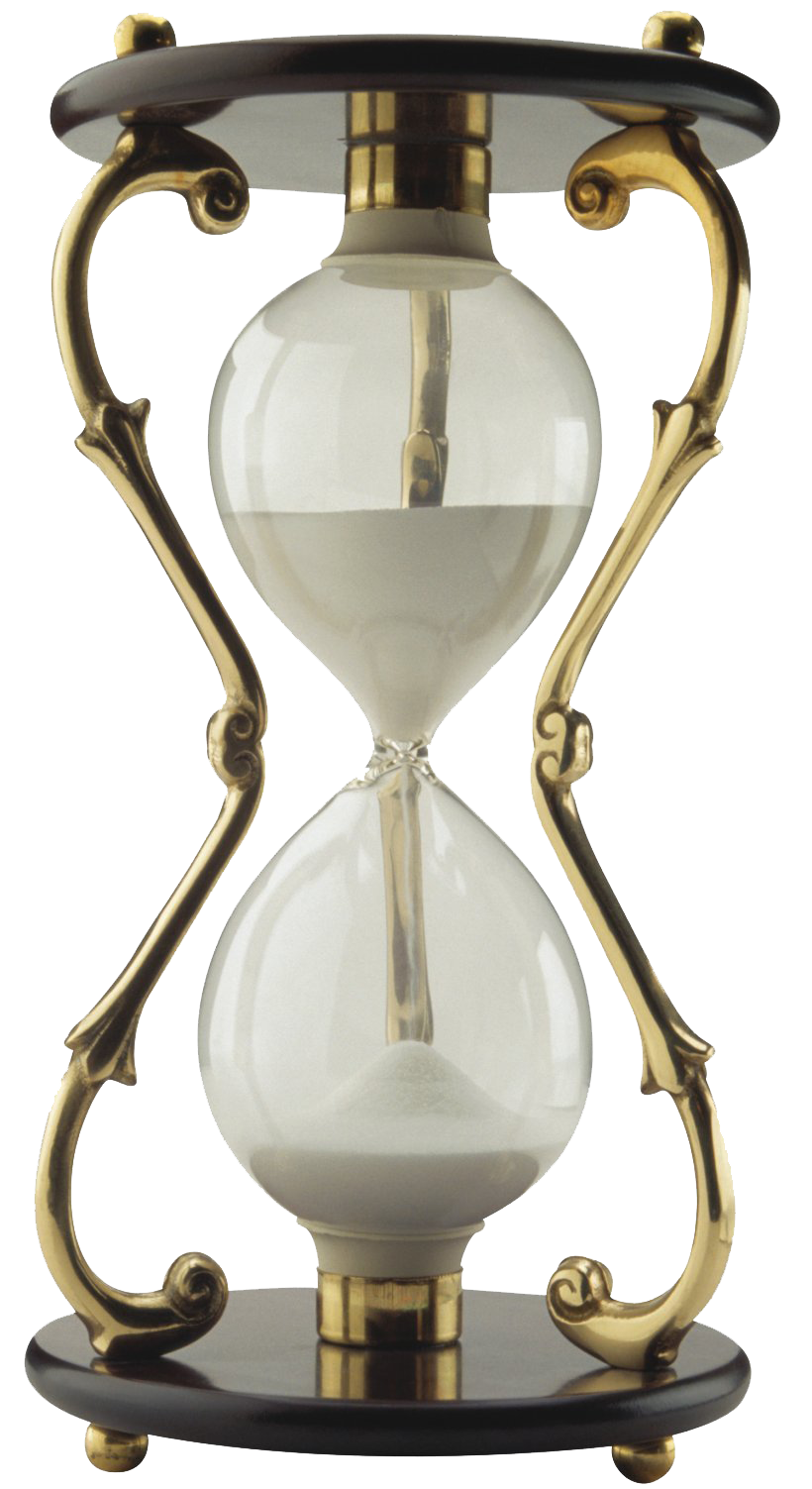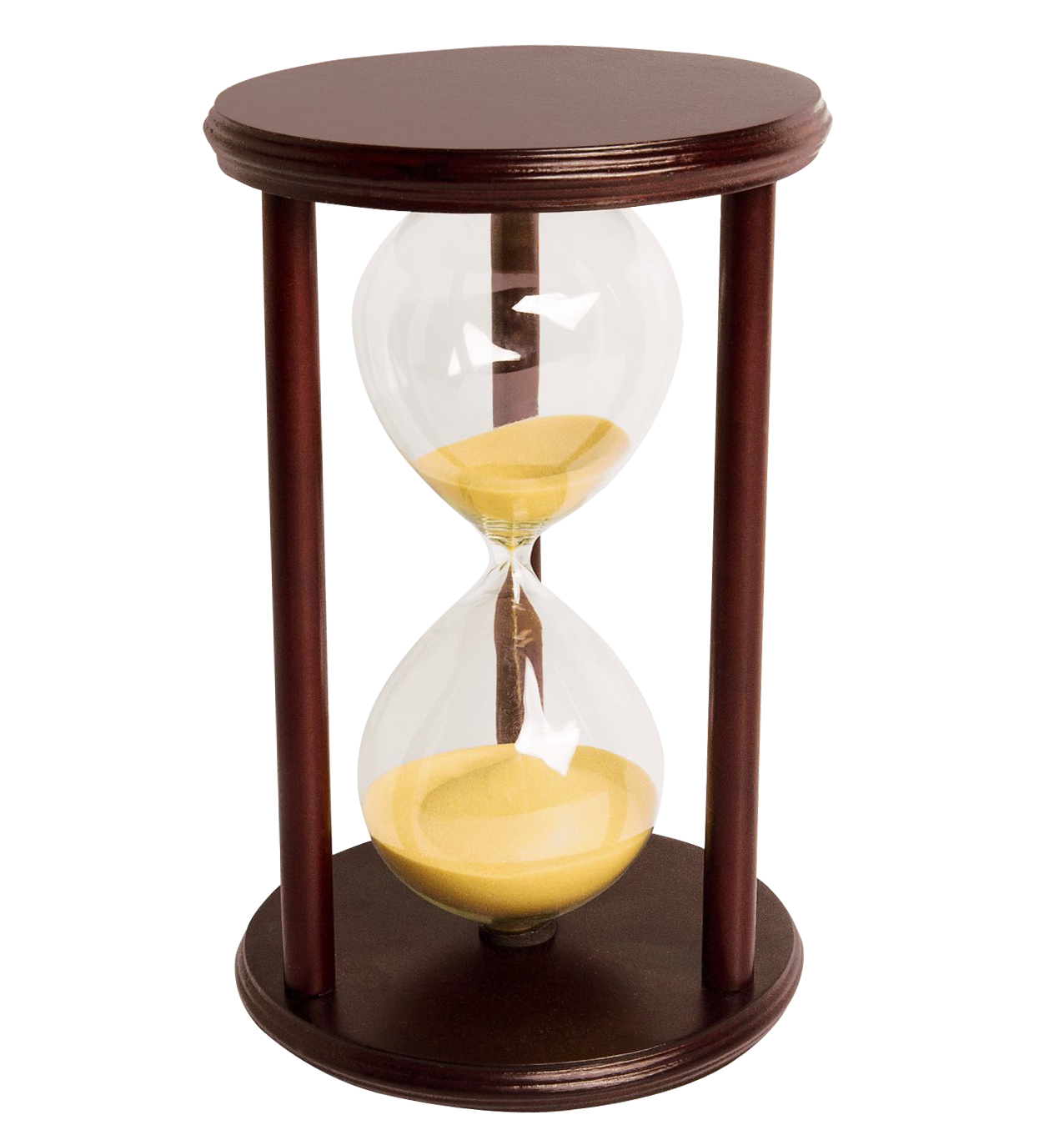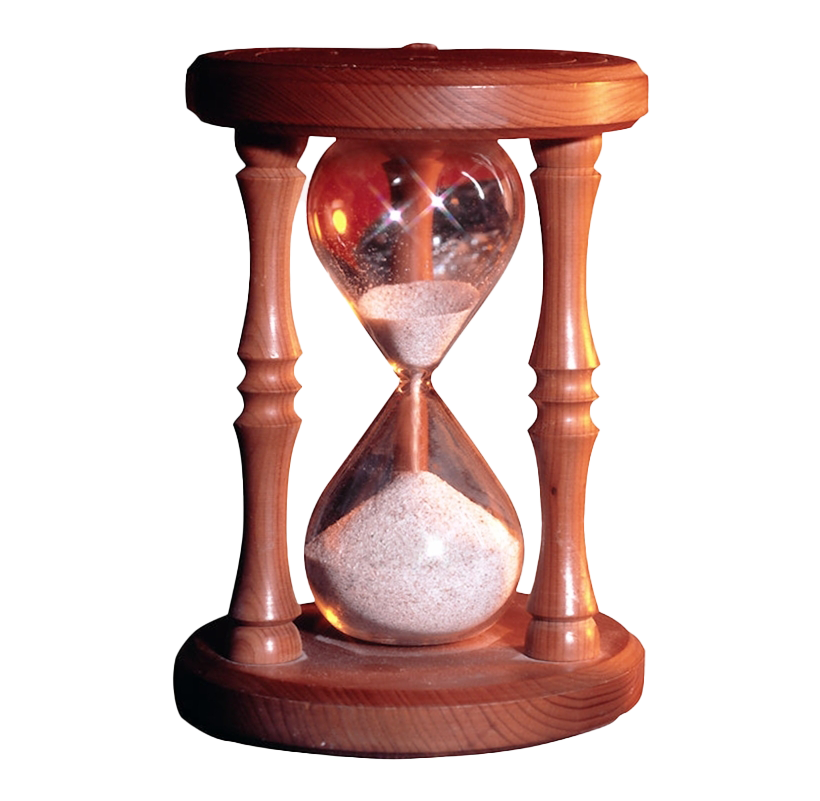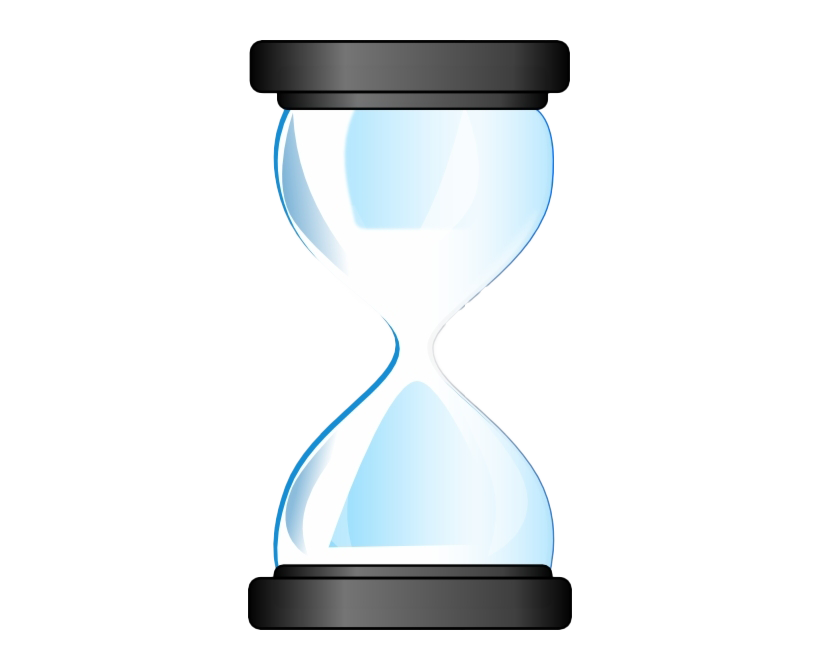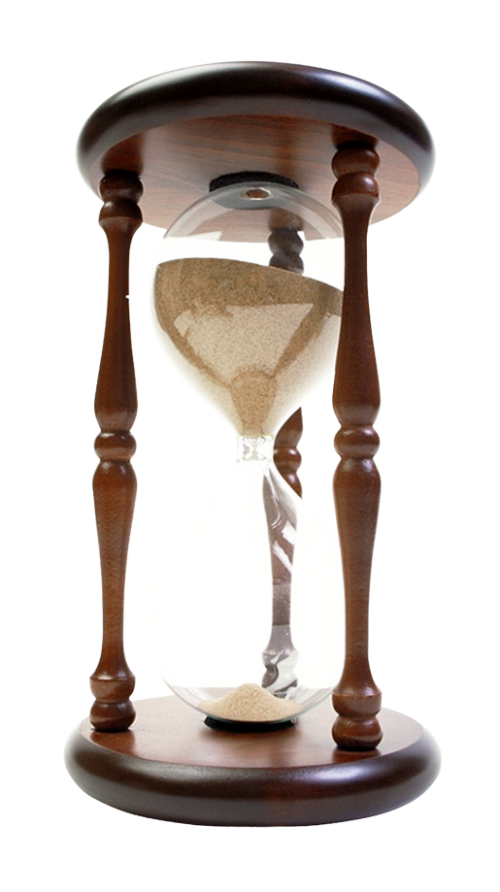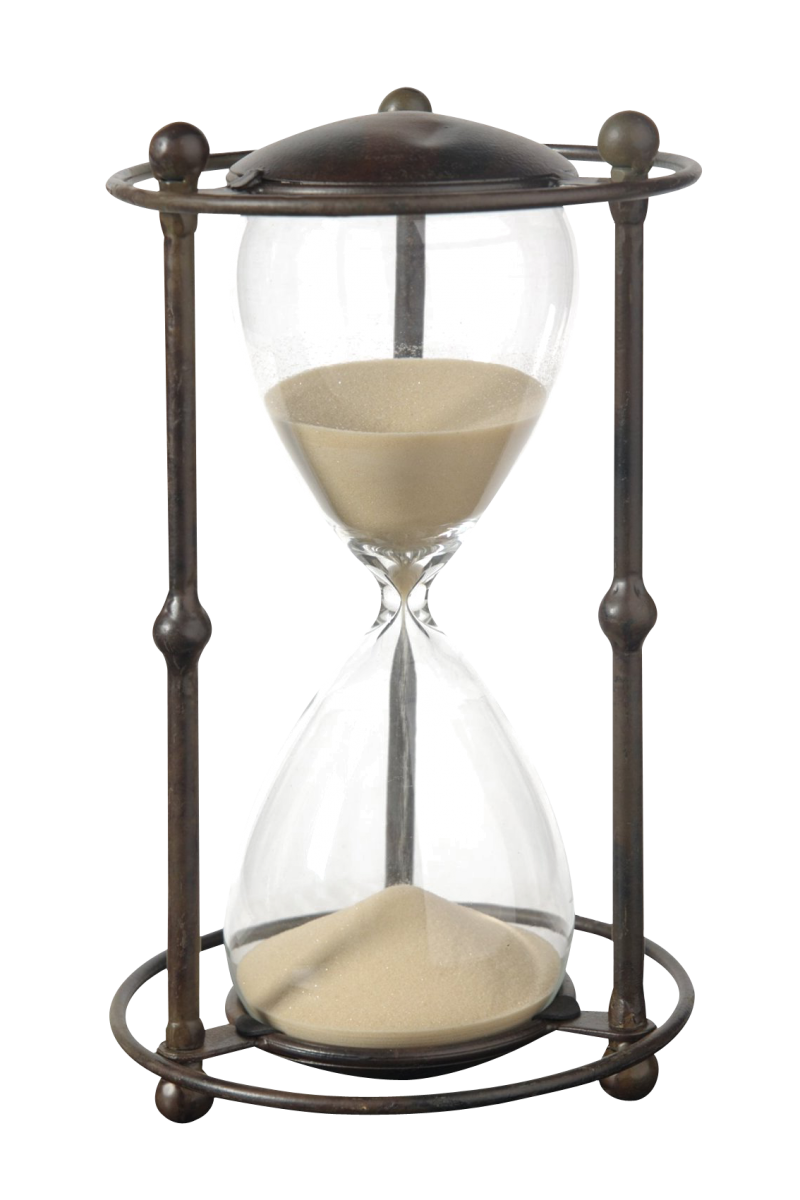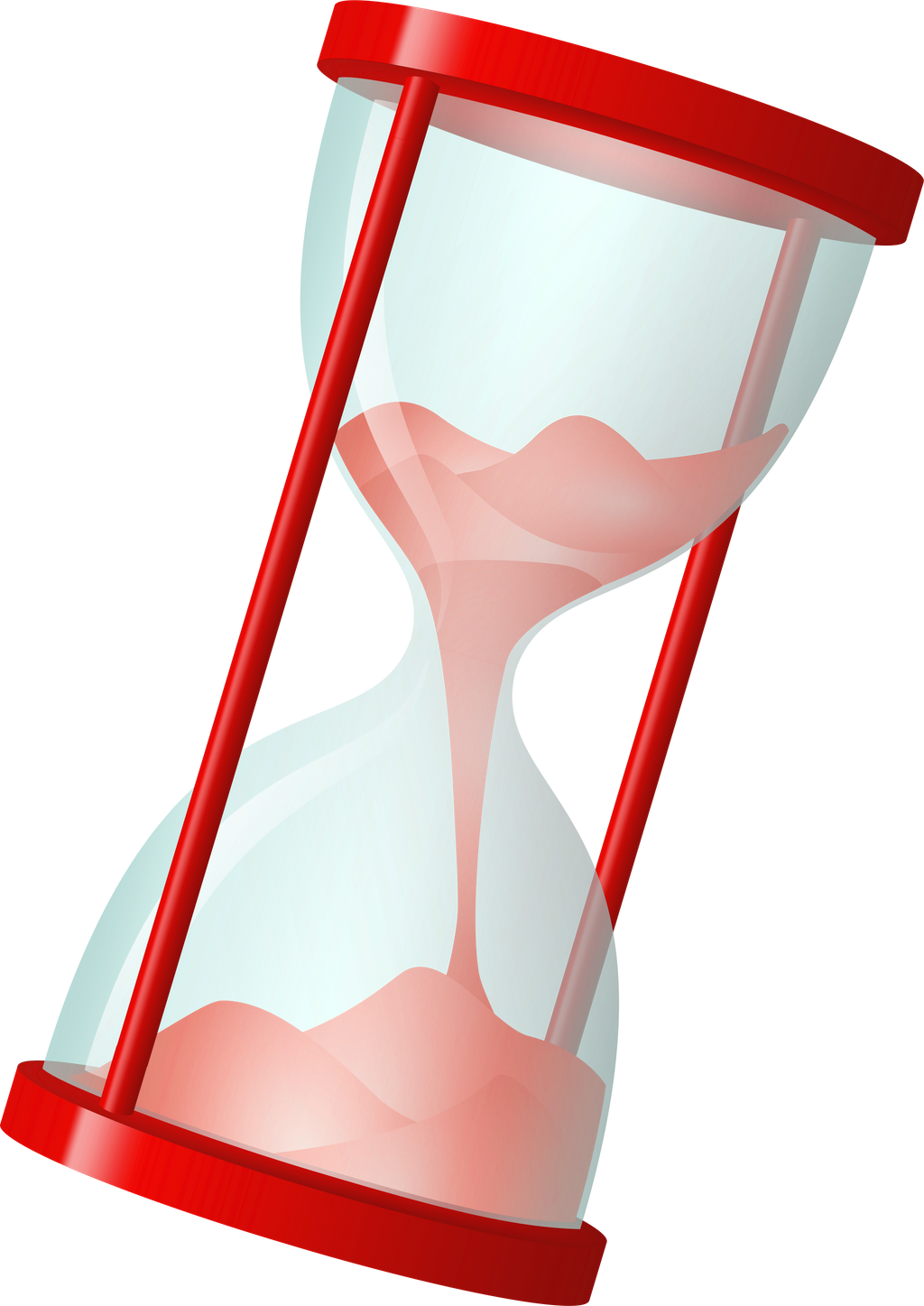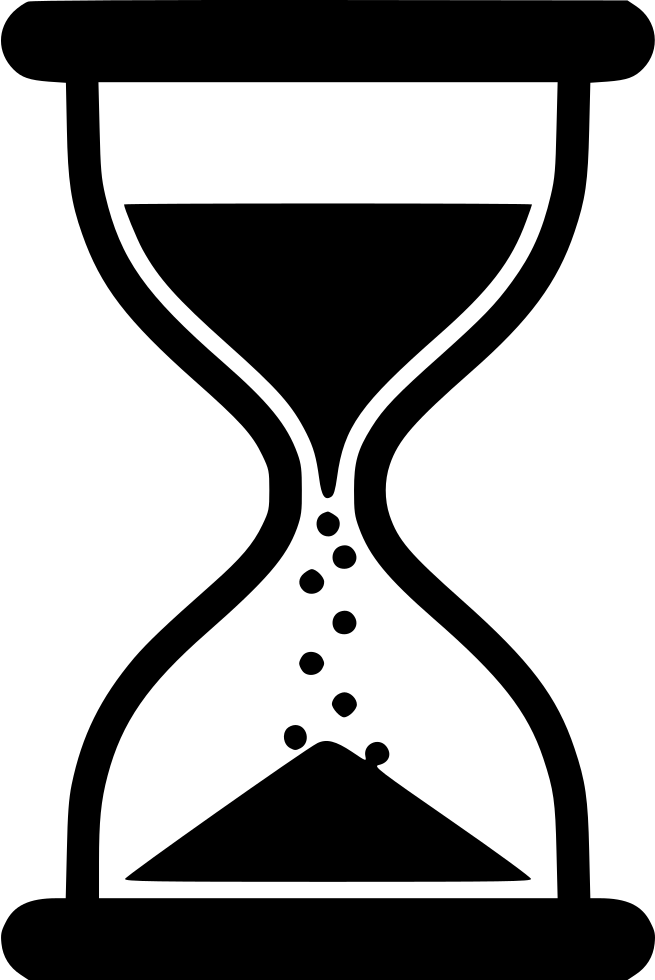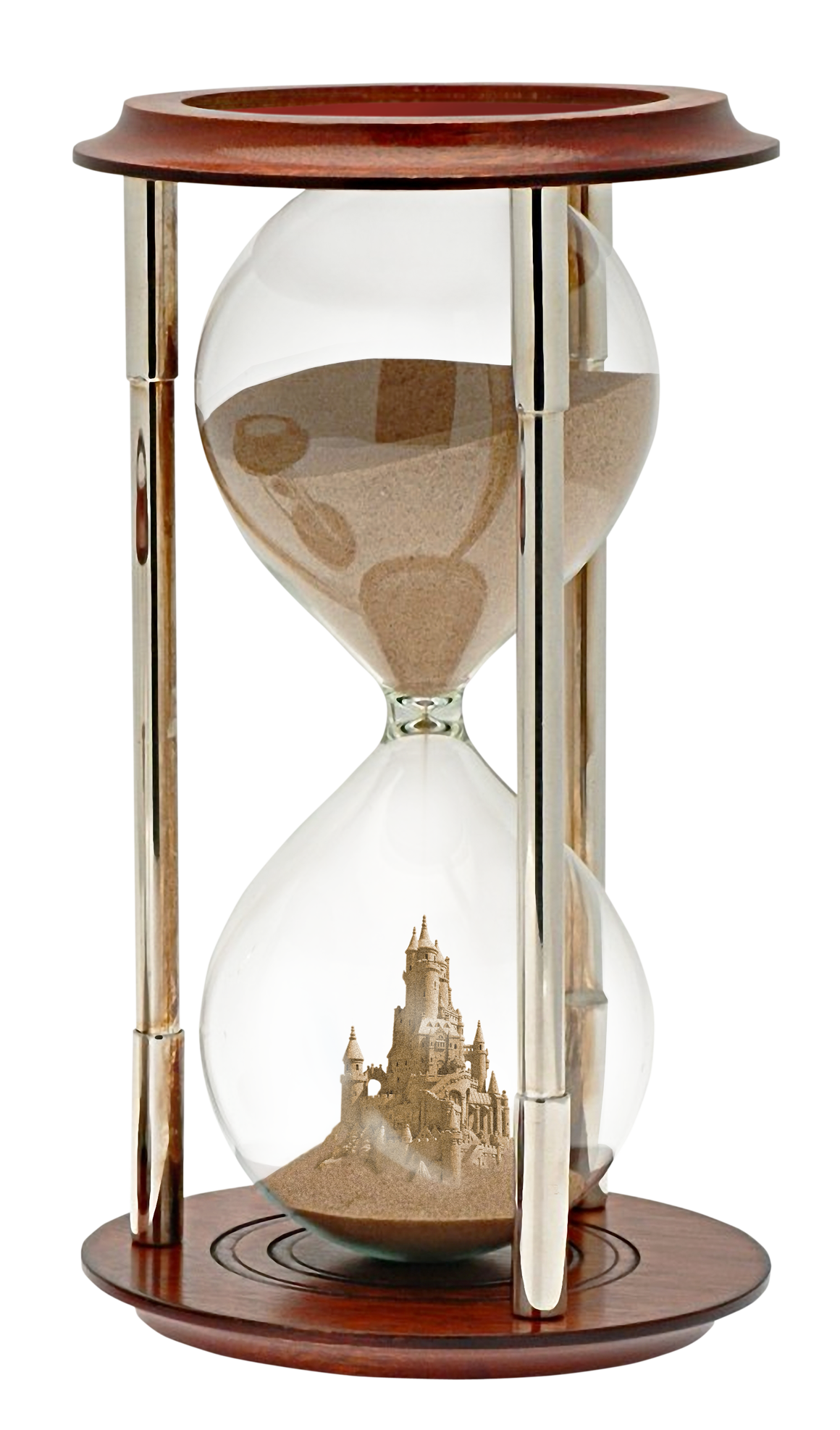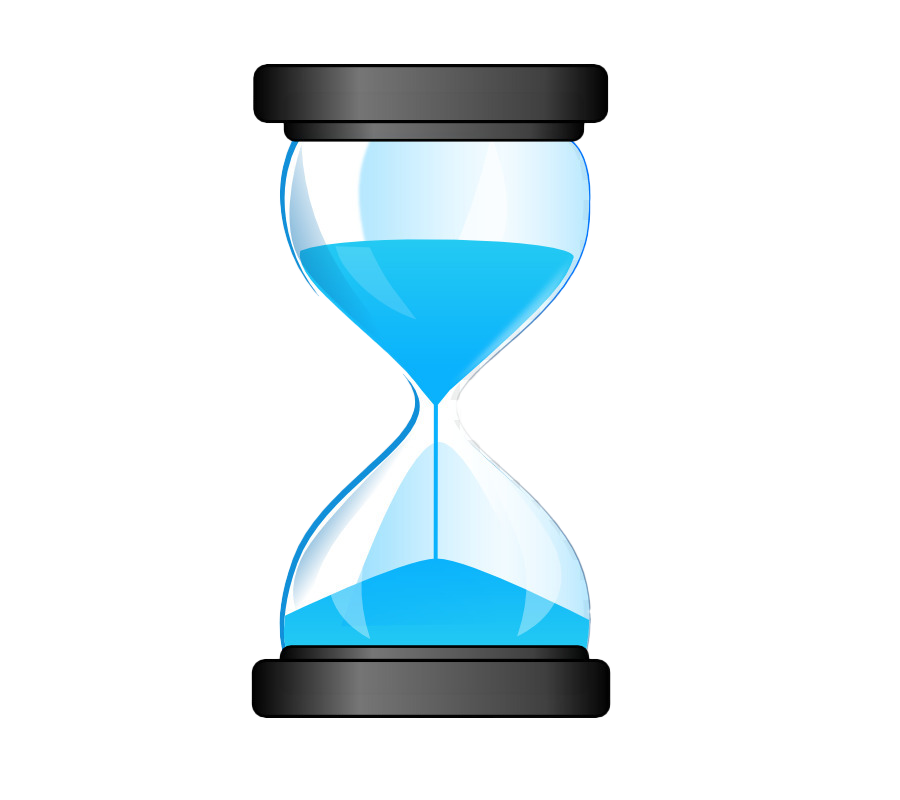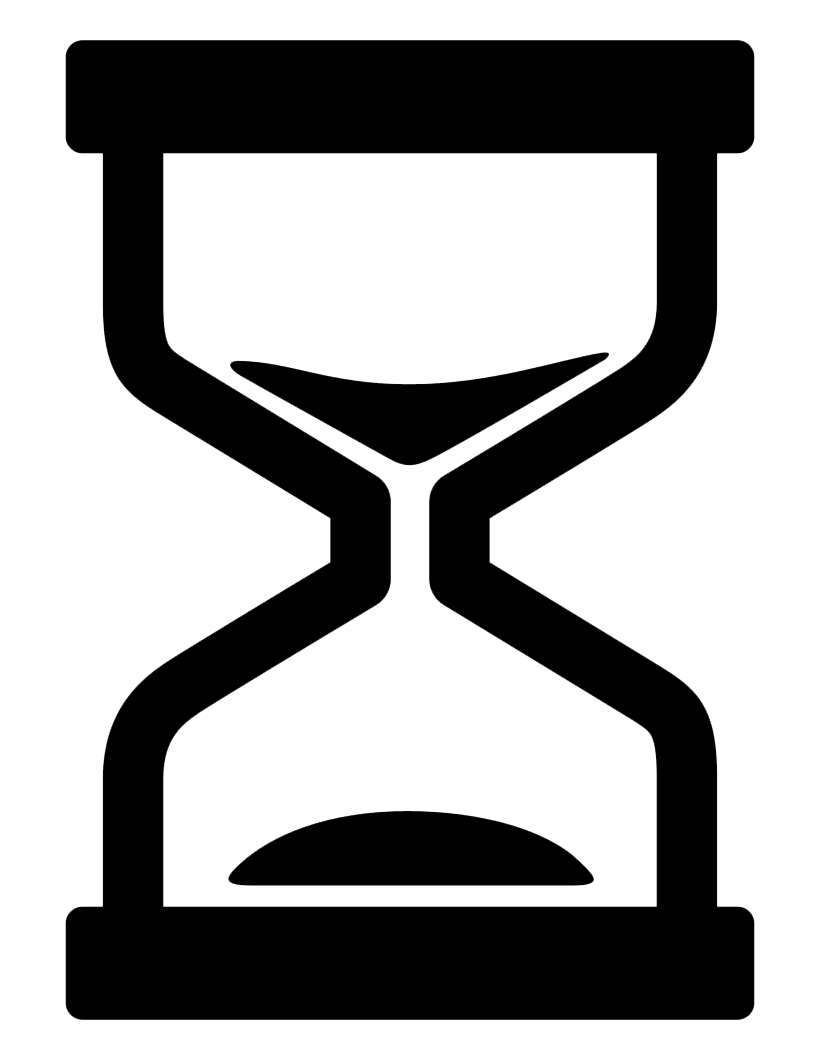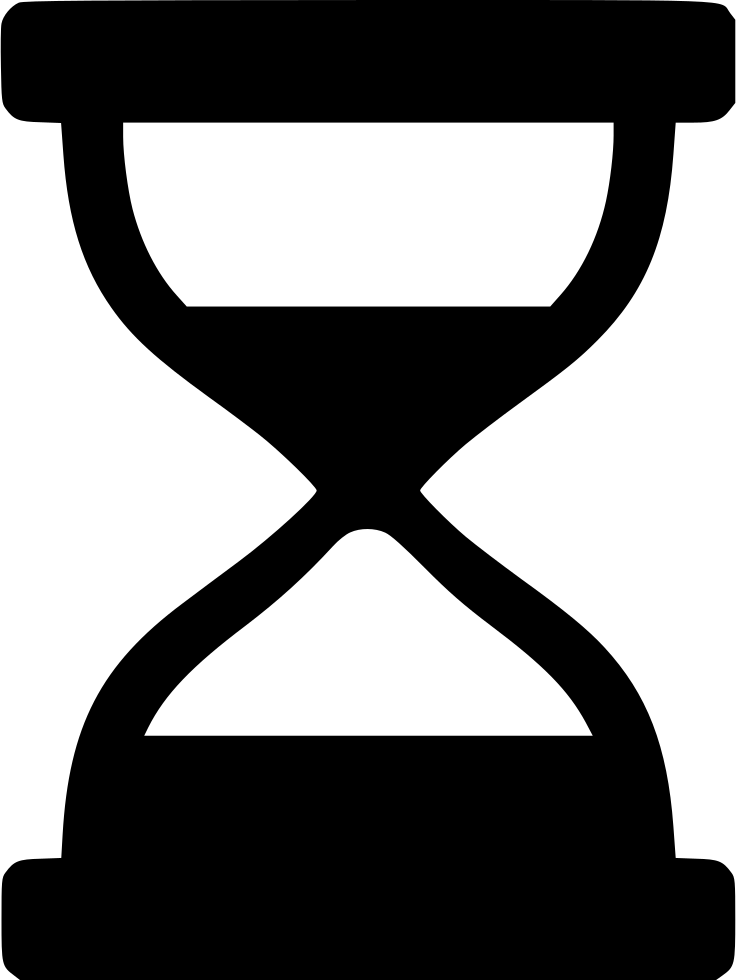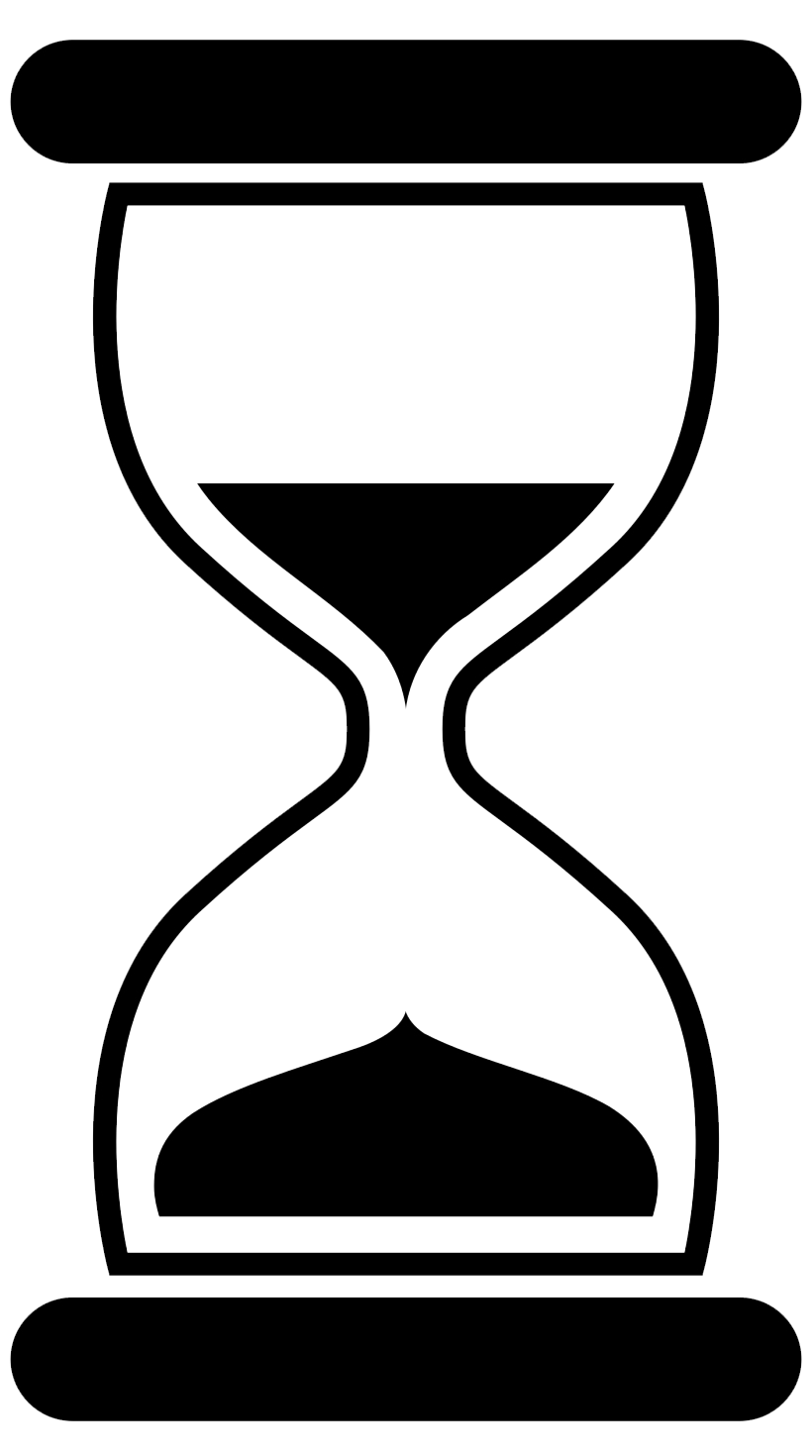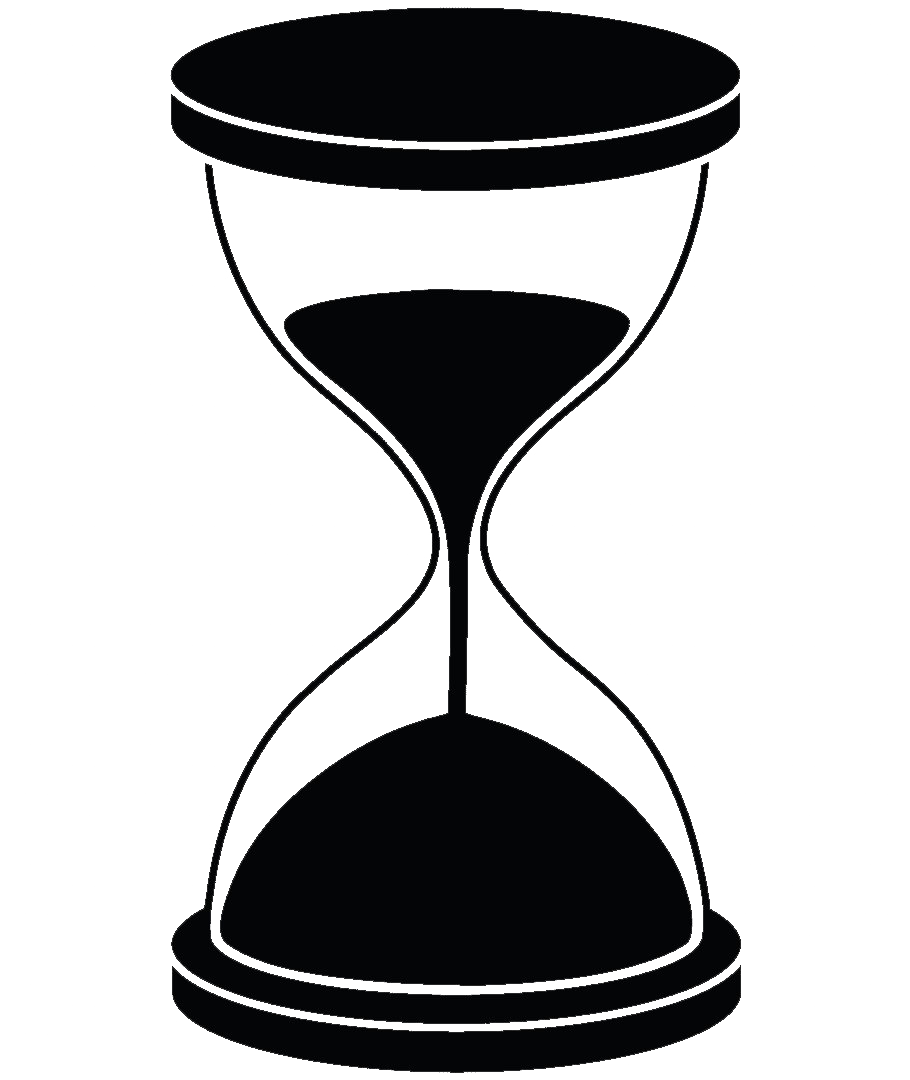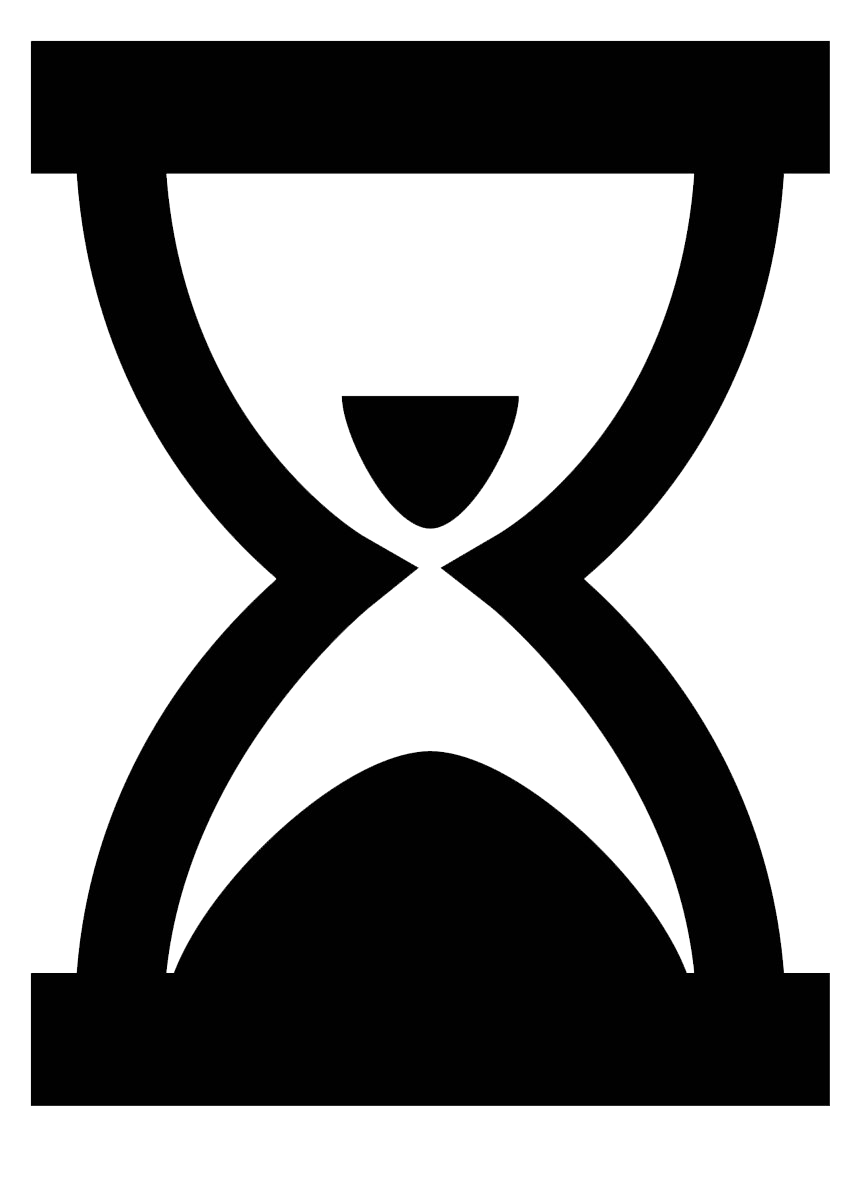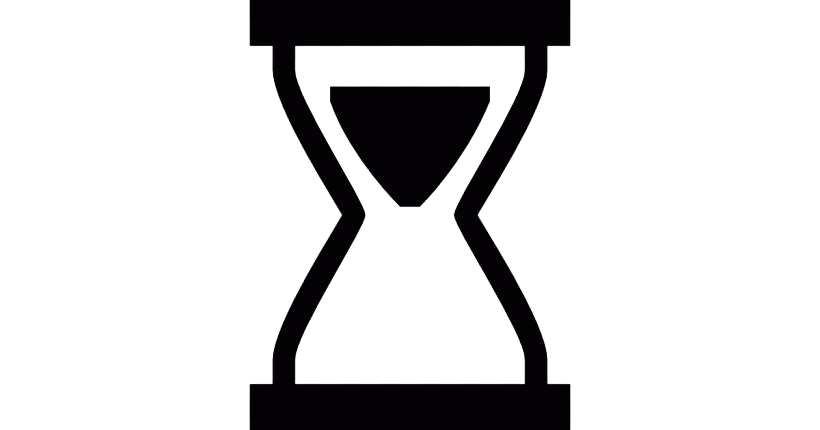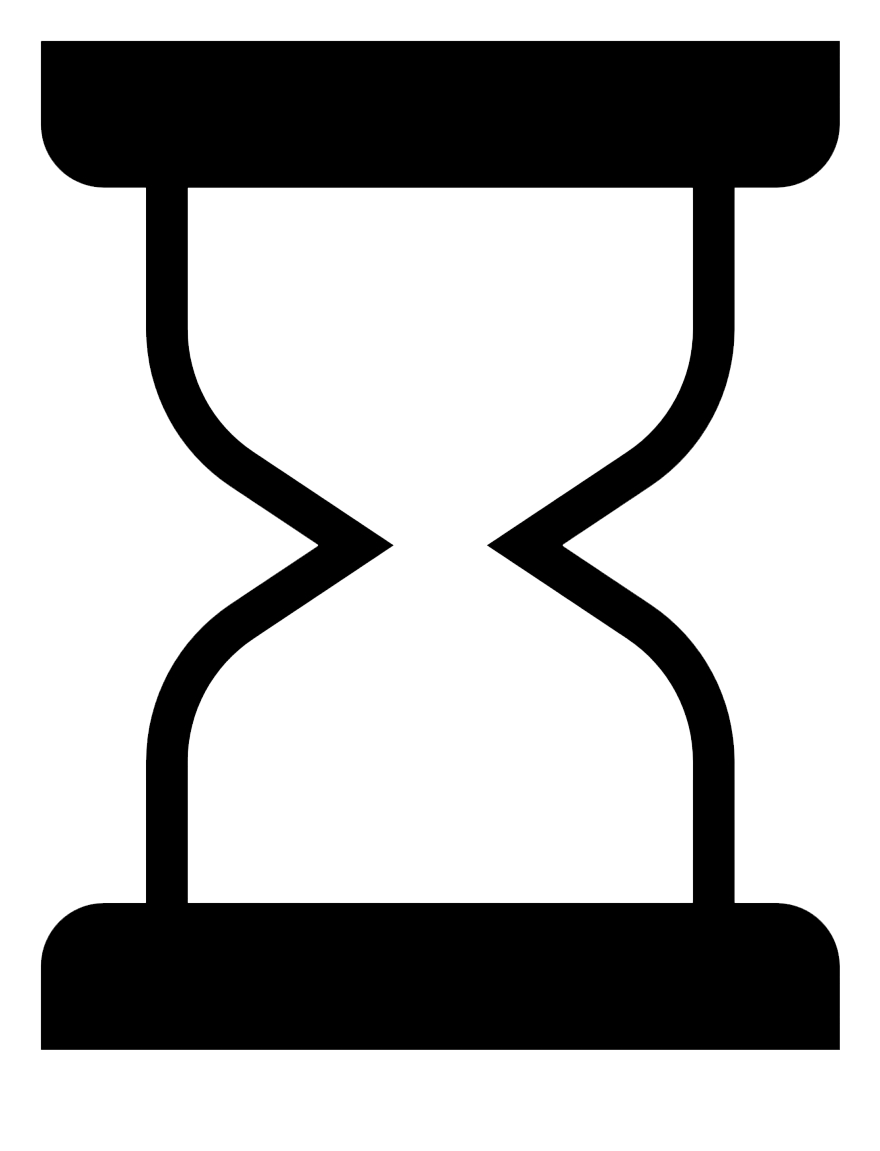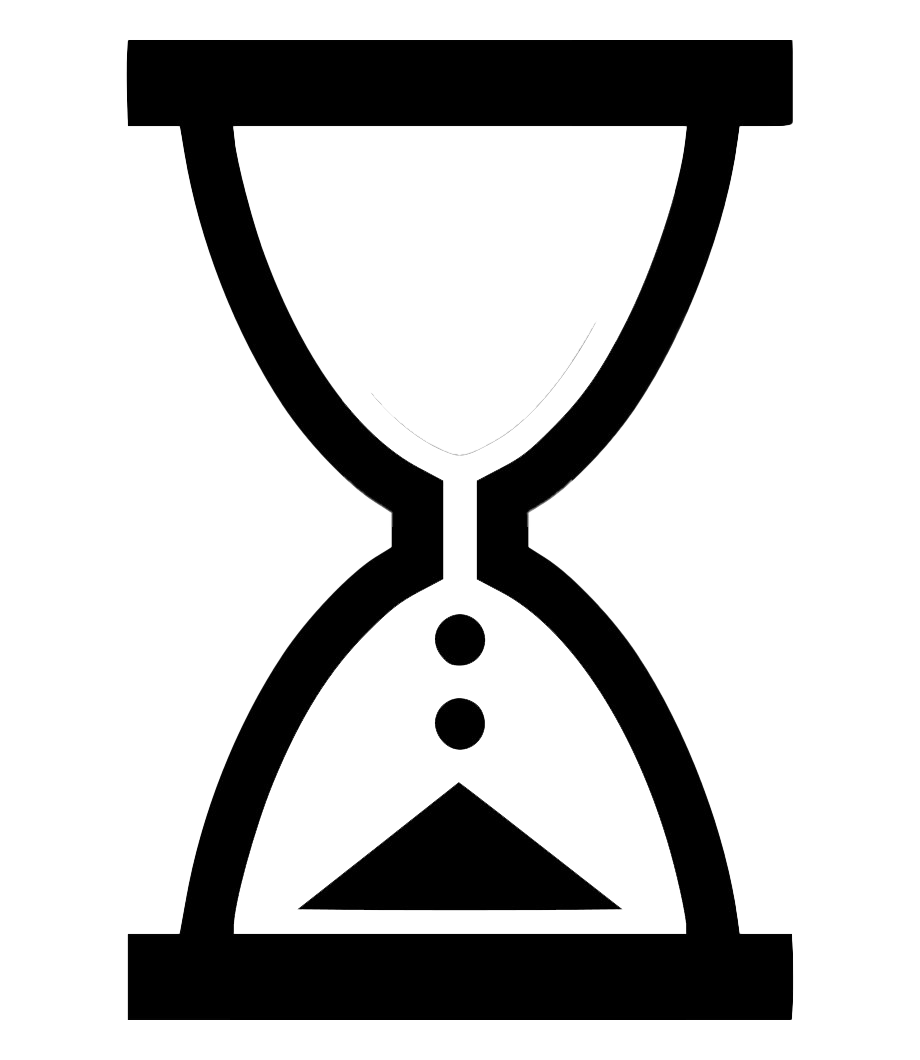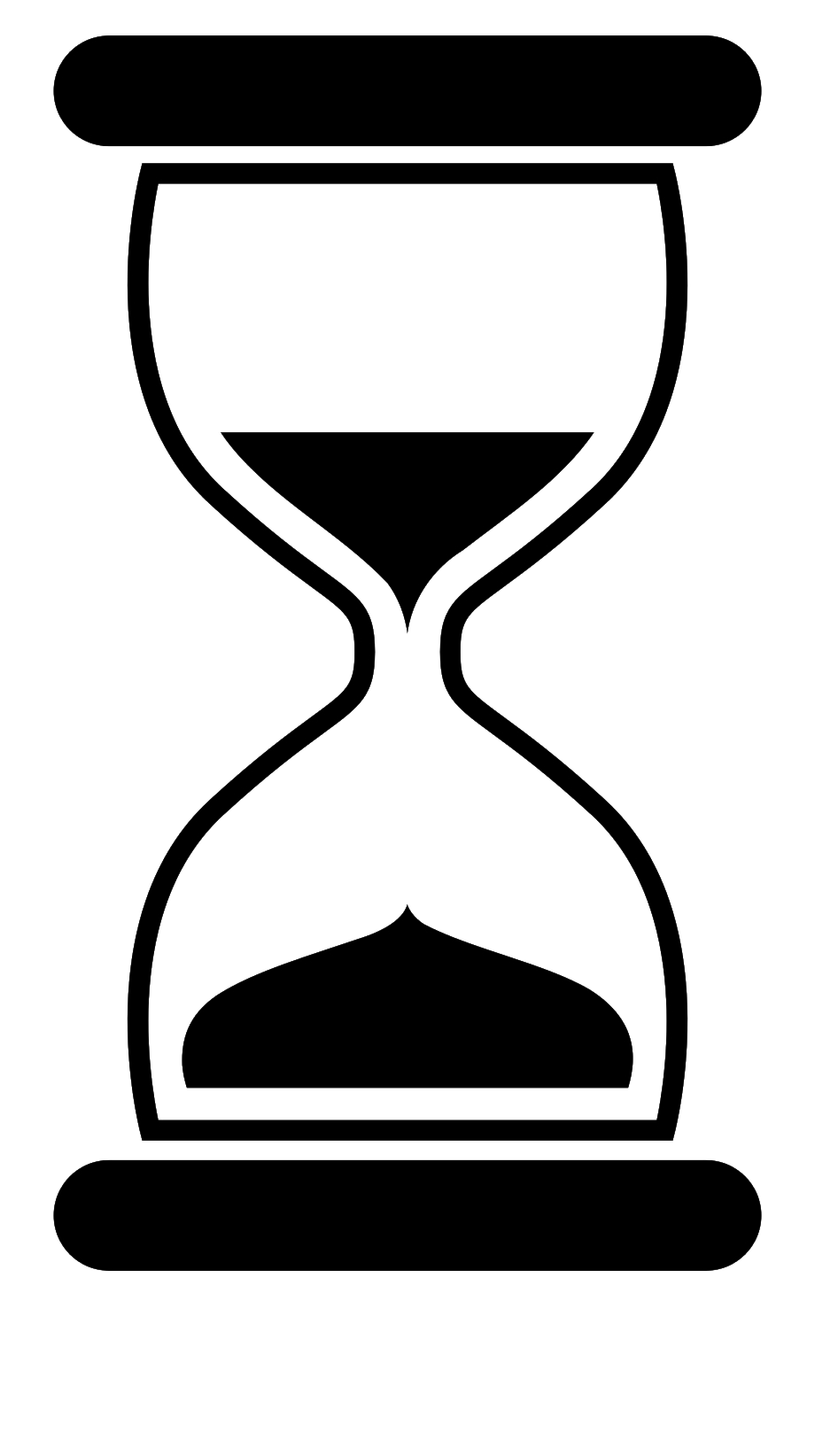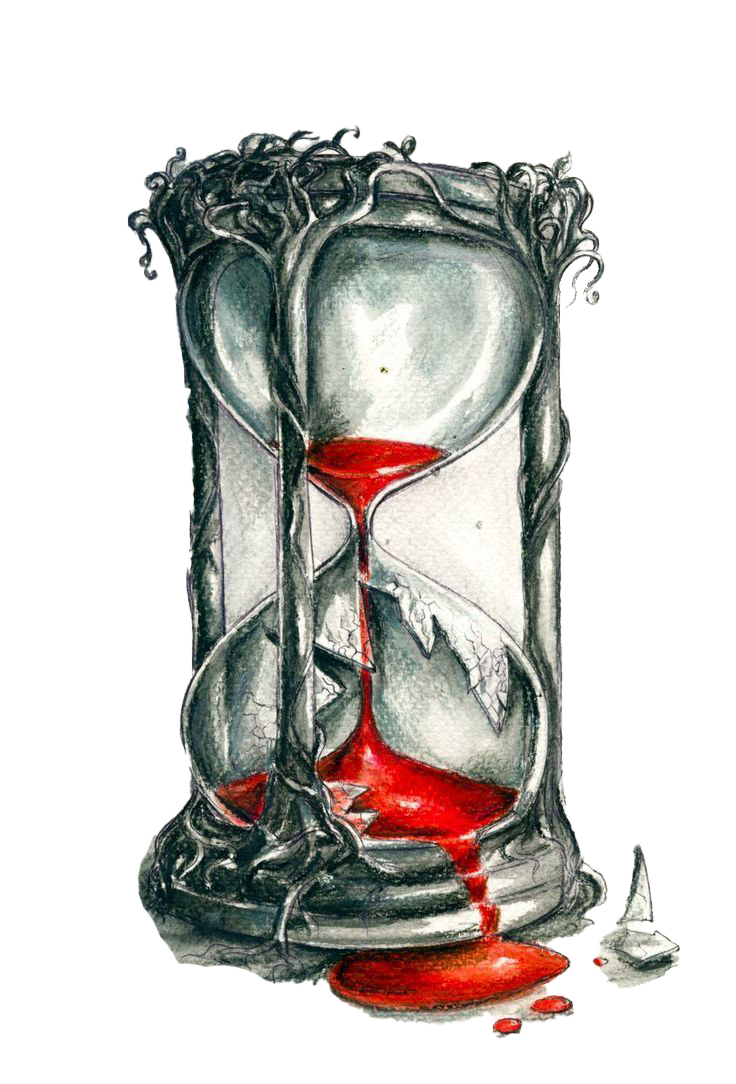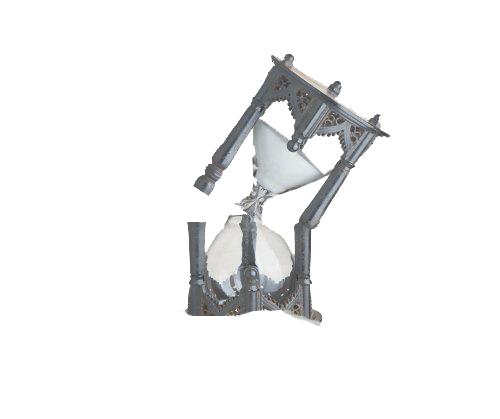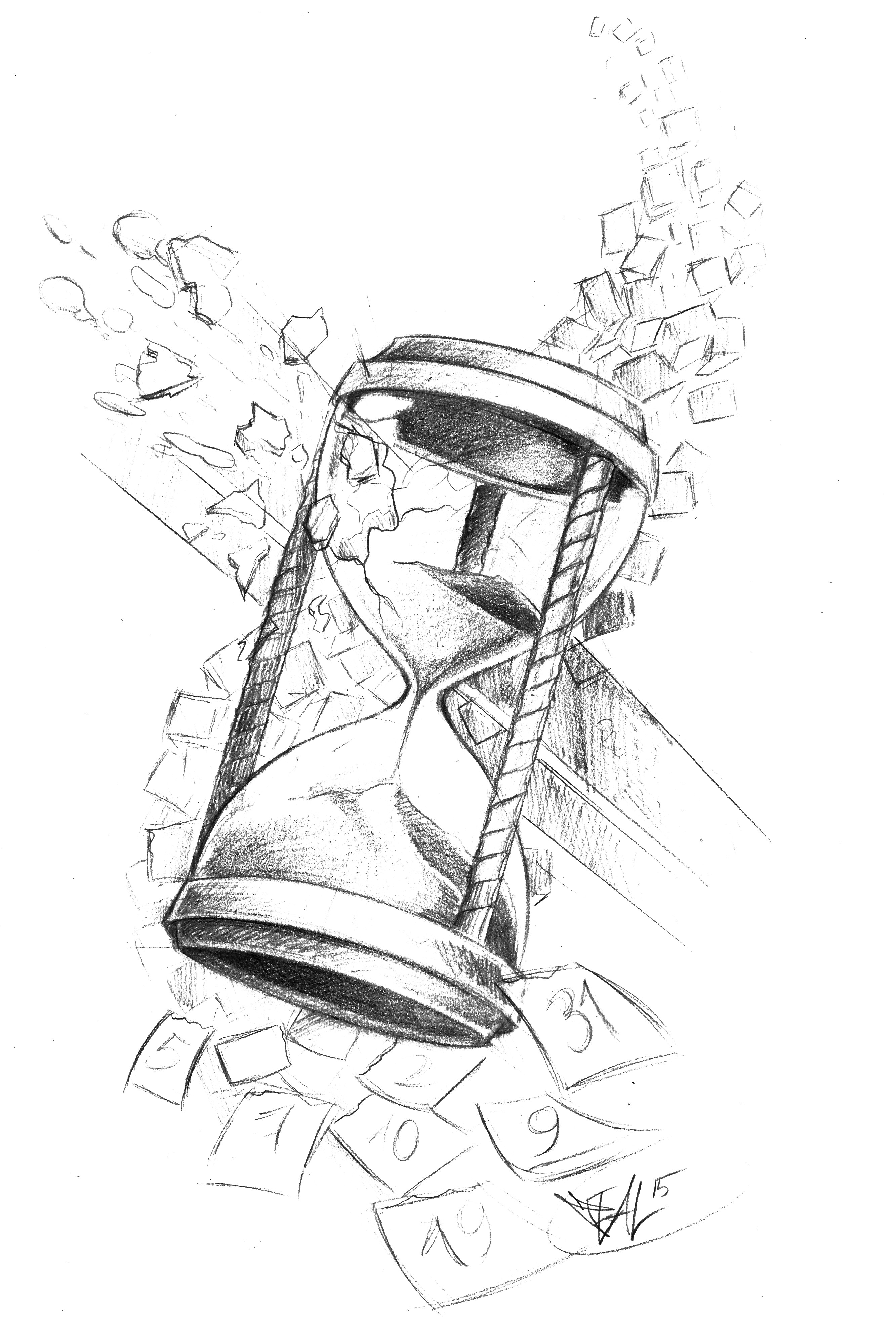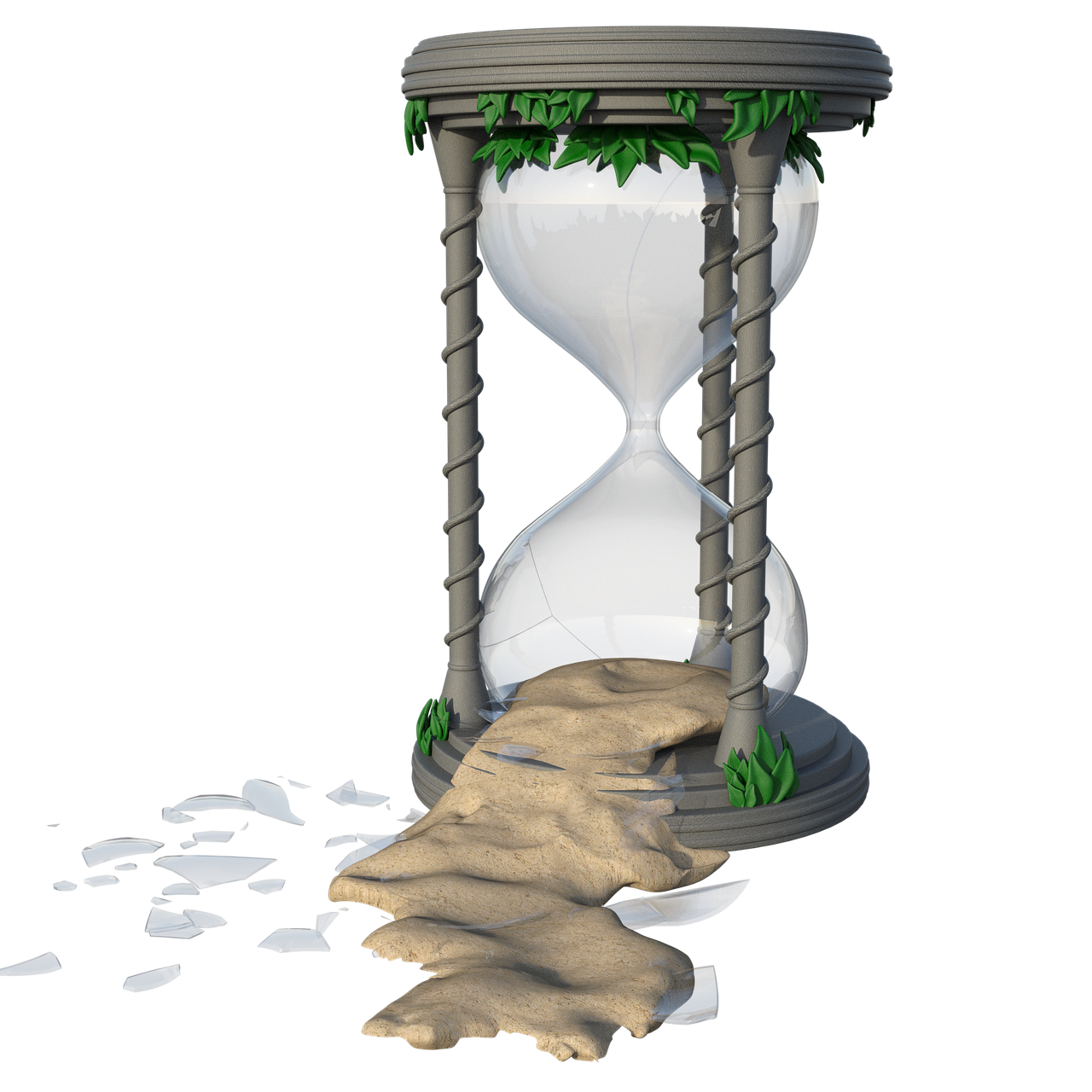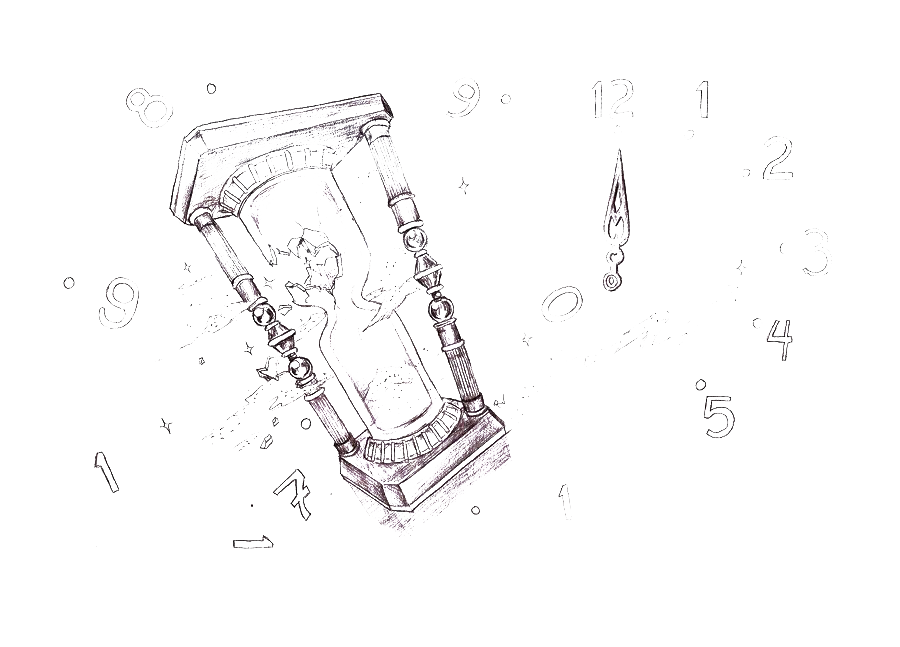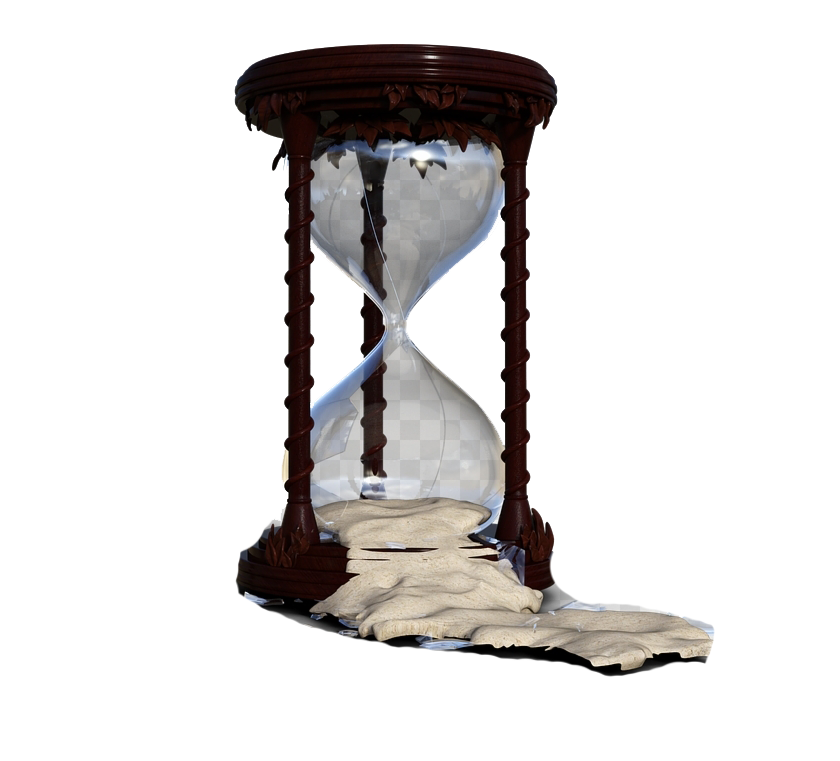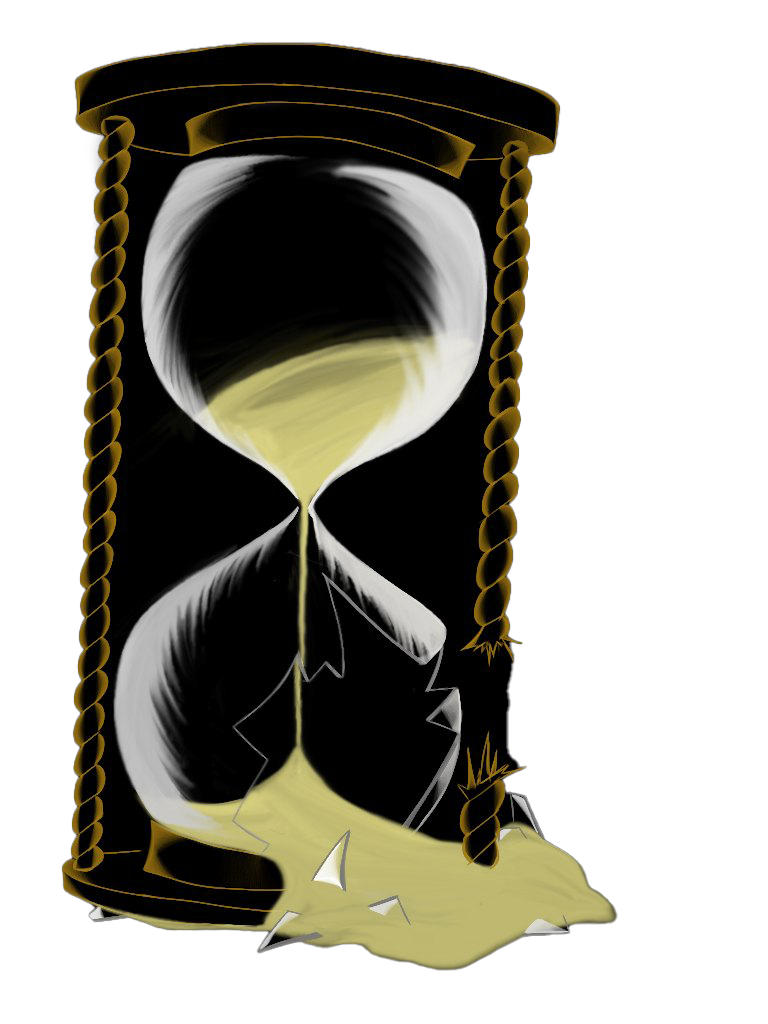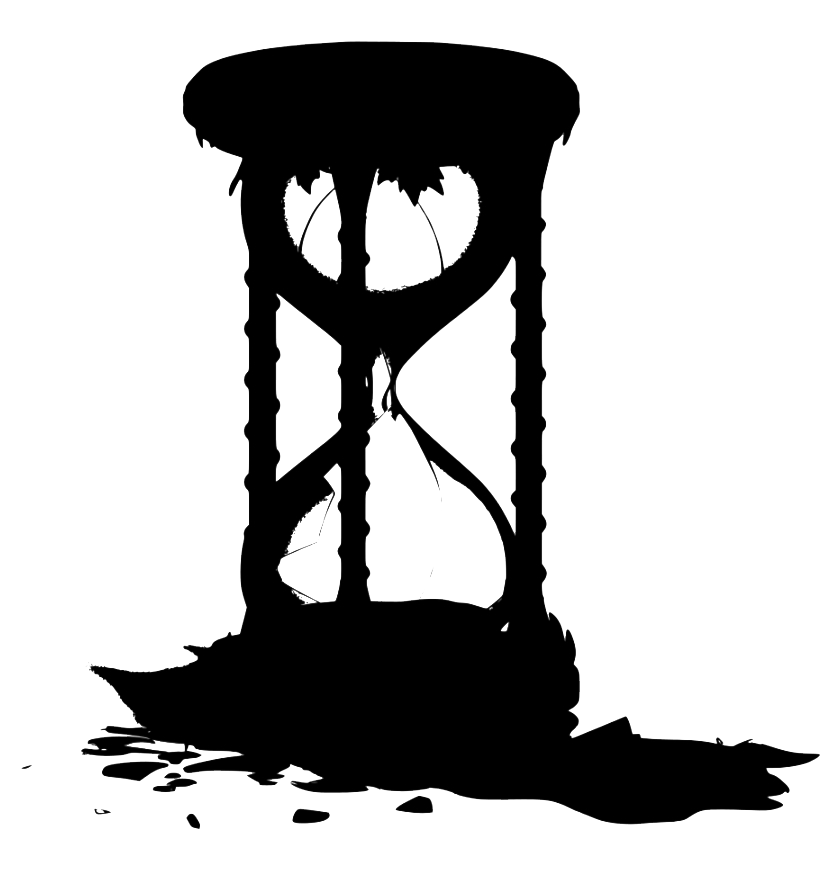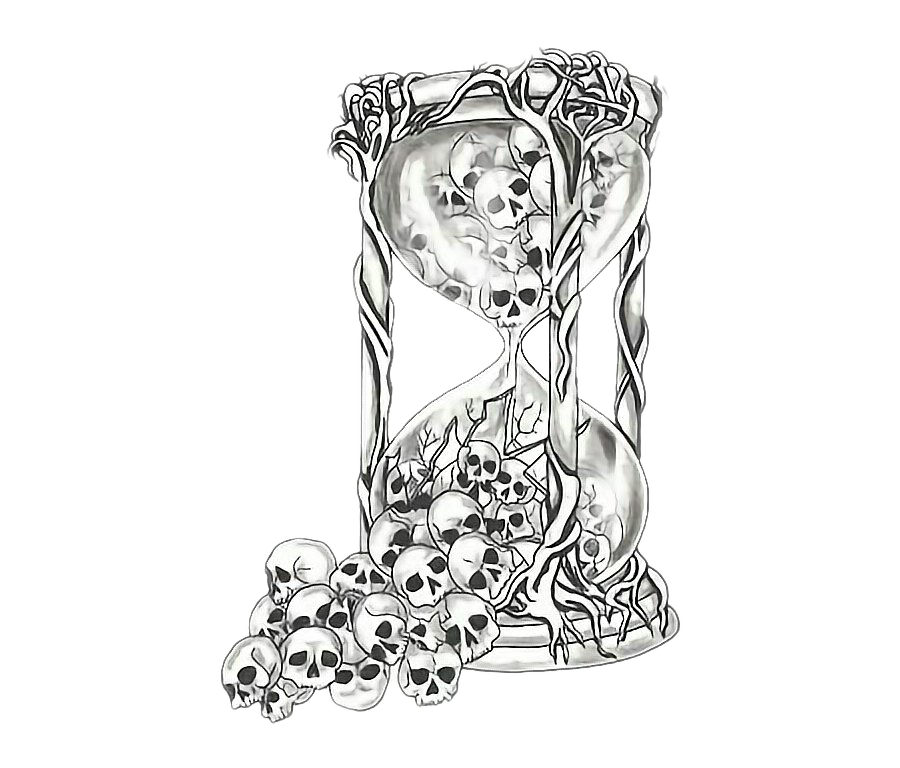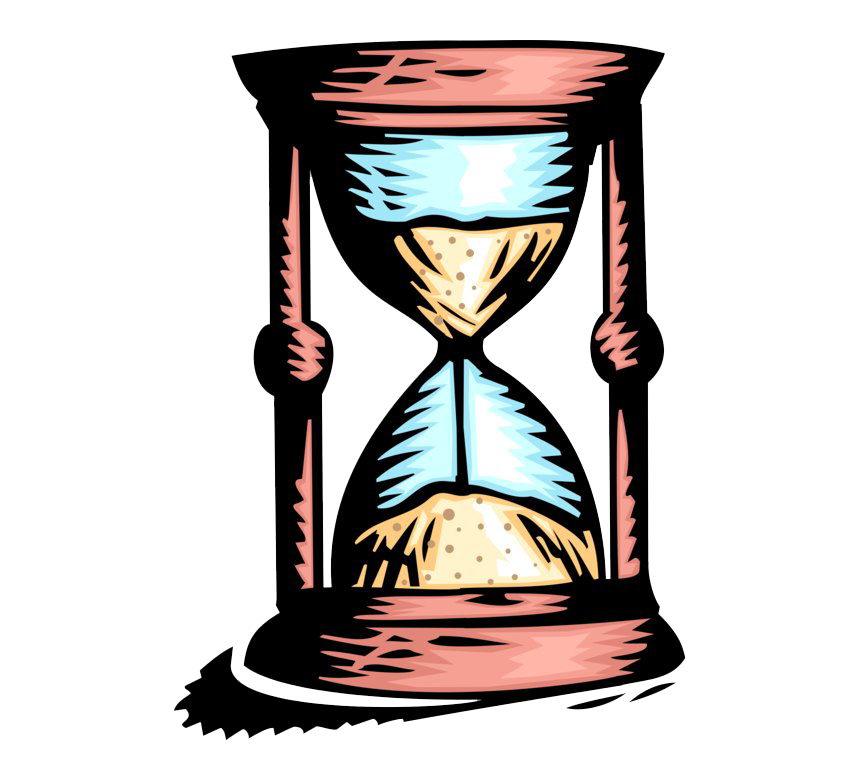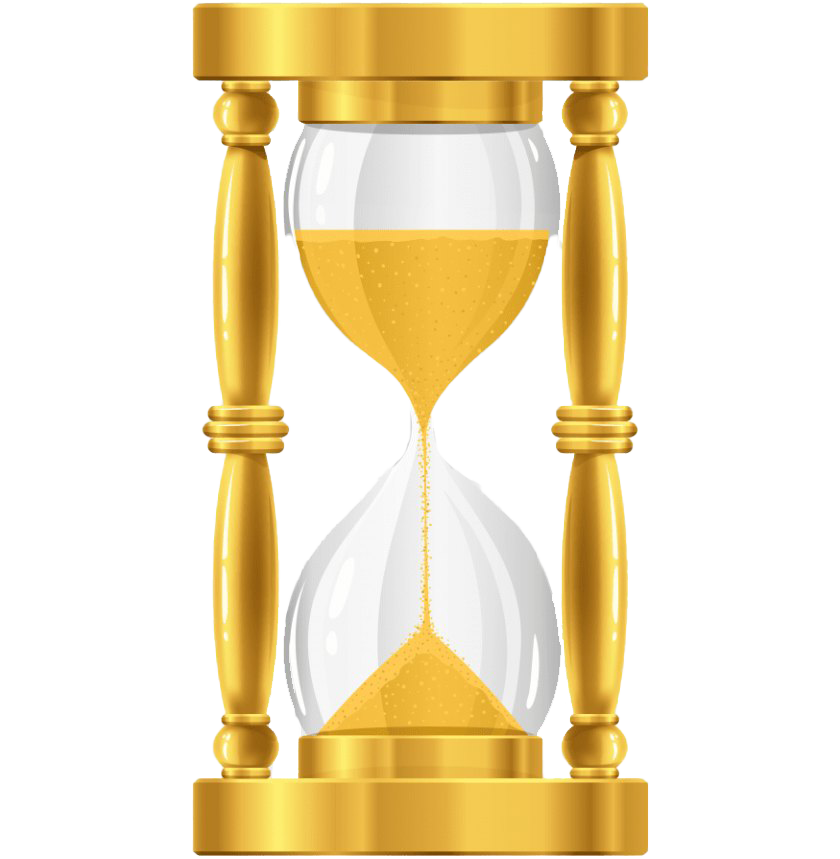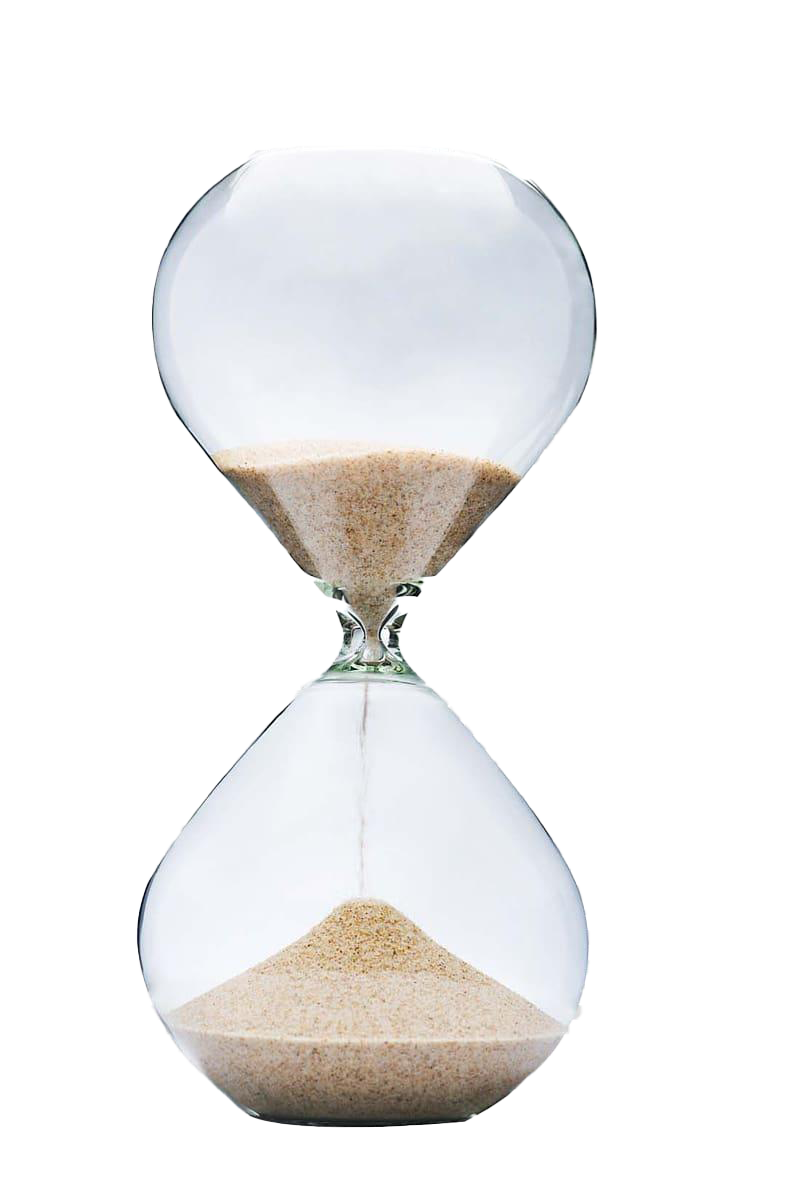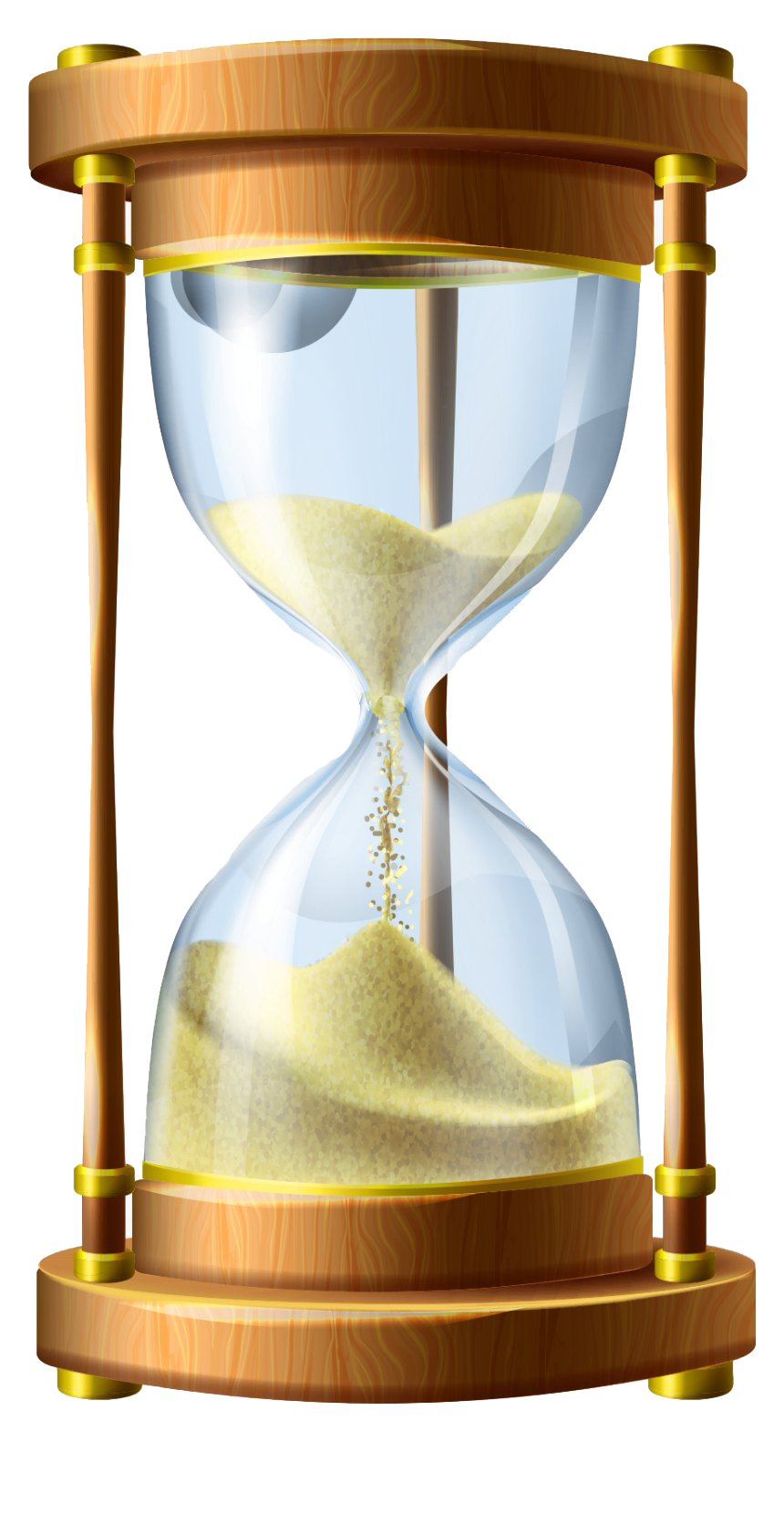Download top and best high-quality free Hourglass PNG Transparent Images backgrounds available in various sizes. To view the full PNG size resolution click on any of the below image thumbnail.
License Info: Creative Commons 4.0 BY-NC
An hourglass (or sandglass, sand timer, sand clock or egg timer) is a device used to measure the passage of time. It includes two glass bulbs connected vertically by a narrow neck, which allows a controlled flow of a substance (historically sand) from the upper bulb to the lower one. As a rule, the upper and lower bulbs are symmetrical so that the hourglass will measure the same duration regardless of the orientation. The specific measurement time for a given hourglass is determined by factors such as the quantity and coarseness of the particles, the size of the bulb, and the width of the neck.
Representations of an marine sandglass or we simply may call hourglass as a symbol of the passage of time are found in art, in particular on tombstones or other monuments, from antiquity to the present day. The shape of a winged hourglass was used as a literal representation of the well-known Latin epitaph tempus fugit (“time flies”).
There is no trace of the hourglass existing in Europe before the High Middle Ages; the first documented example dates from the 8th century CE, designed by a Frankish monk named Liutprand, who served in the cathedral of Chartres, France. But it was not until the 14th century that the hourglass was commonly seen, the first firm evidence being a representation in the fresco 1338 Allegory of good government by Ambrogio Lorenzetti.
The use of the hourglass has been recorded since the 14th century. The documents written on this subject came mainly from the logs of European ships. During the same period, it appeared in other registers and lists of ship stores. The first recorded reference, which can be said with certainty to refer to an marine sandglass date from c. 1345, in a receipt from Thomas de Stetesham, clerk of King La George’s ship, during the reign of Edward III of England; translated from Latin, the receipt says: in 1345:
“The same Thomas declares having paid to Lescluse, in Flanders, twelve glass horologes (” pro xii. Orlogiis vitreous “), the price for each 4½ gross’, in sterling 9s.
Marine sandglasses were very popular onboard ships because they were the most reliable measure of weather at sea. Unlike the clepsydra, the movement of the ship during sailing did not affect the hourglass. The fact that the hourglass also uses granular materials instead of liquids gave him more precise measurements since the clepsydra was subject to condensation inside during temperature changes.
Download Hourglass PNG images transparent gallery.
- Golden Hourglass PNG
Resolution: 860 × 1142
Size: 401 KB
Image Format: .png
Download
- Golden Hourglass Transparent
Resolution: 509 × 720
Size: 212 KB
Image Format: .png
Download
- Hourglass PNG Download Image
Resolution: 1498 × 2711
Size: 3781 KB
Image Format: .png
Download
- Hourglass PNG File Download Free
Resolution: 1152 × 1704
Size: 1275 KB
Image Format: .png
Download
- Hourglass PNG Free Download
Resolution: 860 × 1577
Size: 493 KB
Image Format: .png
Download
- Hourglass PNG Free Image
Resolution: 3000 × 3000
Size: 1228 KB
Image Format: .png
Download
- Hourglass PNG High Quality Image
Resolution: 900 × 1142
Size: 401 KB
Image Format: .png
Download
- Hourglass PNG Image HD
Resolution: 910 × 800
Size: 360 KB
Image Format: .png
Download
- Hourglass PNG Image
Resolution: 920 × 1318
Size: 132 KB
Image Format: .png
Download
- Hourglass PNG Images
Resolution: 820 × 1503
Size: 752 KB
Image Format: .png
Download
- Hourglass PNG Photo
Resolution: 1276 × 1361
Size: 969 KB
Image Format: .png
Download
- Hourglass PNG Pic
Resolution: 820 × 801
Size: 437 KB
Image Format: .png
Download
- Hourglass PNG
Resolution: 820 × 670
Size: 71 KB
Image Format: .png
Download
- Vector Hourglass PNG Clipart
Resolution: 500 × 892
Size: 334 KB
Image Format: .png
Download
- Vector Hourglass PNG Free Download
Resolution: 800 × 1200
Size: 493 KB
Image Format: .png
Download
- Vector Hourglass PNG Free Image
Resolution: 1024 × 1447
Size: 1196 KB
Image Format: .png
Download
- Vector Hourglass PNG Picture
Resolution: 655 × 980
Size: 52 KB
Image Format: .png
Download
- Vector Hourglass Transparent
Resolution: 1160 × 1974
Size: 1692 KB
Image Format: .png
Download
- Vector Hourglass
Resolution: 900 × 800
Size: 113 KB
Image Format: .png
Download
- Black Hourglass PNG Clipart
Resolution: 820 × 1060
Size: 49 KB
Image Format: .png
Download
- Black Hourglass PNG Download Image
Resolution: 736 × 980
Size: 33 KB
Image Format: .png
Download
- Black Hourglass PNG File
Resolution: 910 × 910
Size: 83 KB
Image Format: .png
Download
- Black Hourglass PNG Free Download
Resolution: 820 × 1470
Size: 96 KB
Image Format: .png
Download
- Black Hourglass PNG Free Image
Resolution: 512 × 512
Size: 30 KB
Image Format: .png
Download
- Black Hourglass PNG HD Image
Resolution: 910 × 1080
Size: 127 KB
Image Format: .png
Download
- Black Hourglass PNG High Quality Image
Resolution: 512 × 512
Size: 13 KB
Image Format: .png
Download
- Black Hourglass PNG Image
Resolution: 860 × 1186
Size: 94 KB
Image Format: .png
Download
- Black Hourglass PNG Pic
Resolution: 820 × 430
Size: 39 KB
Image Format: .png
Download
- Black Hourglass PNG Picture
Resolution: 880 × 1151
Size: 48 KB
Image Format: .png
Download
- Black Hourglass PNG
Resolution: 920 × 1060
Size: 90 KB
Image Format: .png
Download
- Black Hourglass Transparent
Resolution: 860 × 890
Size: 104 KB
Image Format: .png
Download
- Black Hourglass
Resolution: 920 × 1644
Size: 92 KB
Image Format: .png
Download
- Broken Hourglass PNG Clipart
Resolution: 736 × 1084
Size: 792 KB
Image Format: .png
Download
- Broken Hourglass PNG File
Resolution: 500 × 419
Size: 61 KB
Image Format: .png
Download
- Broken Hourglass PNG Free Download
Resolution: 2666 × 3955
Size: 3452 KB
Image Format: .png
Download
- Broken Hourglass PNG Free Image
Resolution: 1280 × 1280
Size: 1216 KB
Image Format: .png
Download
- Broken Hourglass PNG HD Image
Resolution: 900 × 647
Size: 209 KB
Image Format: .png
Download
- Broken Hourglass PNG Image
Resolution: 840 × 761
Size: 273 KB
Image Format: .png
Download
- Broken Hourglass PNG Picture
Resolution: 768 × 1024
Size: 392 KB
Image Format: .png
Download
- Broken Hourglass PNG
Resolution: 840 × 870
Size: 88 KB
Image Format: .png
Download
- Broken Hourglass Transparent
Resolution: 900 × 768
Size: 425 KB
Image Format: .png
Download
- Broken Hourglass
Resolution: 860 × 780
Size: 307 KB
Image Format: .png
Download
- Golden Hourglass PNG Clipart
Resolution: 840 × 859
Size: 263 KB
Image Format: .png
Download
- Golden Hourglass PNG Free Image
Resolution: 800 × 1199
Size: 303 KB
Image Format: .png
Download
- Golden Hourglass PNG Image
Resolution: 860 × 1683
Size: 779 KB
Image Format: .png
Download
